
Aliya-by-Aliya Sedra Summary
Rabbi Reuven Tradburks Page 12

Looking for Hashem in Auschwitz
Shoshana Judelman Page 70 PIRKEI AVOT 2











Aliya-by-Aliya Sedra Summary
Rabbi Reuven Tradburks Page 12

Looking for Hashem in Auschwitz
Shoshana Judelman Page 70 PIRKEI AVOT 2









Aza Area (Netivot, Sderot et al)
Beit Shemesh/RBS
Alon Shvut
Raanana/Tel Mond/Herzliya/K.Saba
Be’er Sheva
Shomron
/
Shiloh
/ Givat Shmuel 8:06 6:00 7:09 8:01 5:56 7:04
Givat Zeev 8:06 6:00 7:04 8:00 5:56 7:00 Chevron / Kiryat Arba 8:08 6:02 7:07 8:03 5:58 7:02 Ashkelon 8:07 6:01 7:06 8:02 5:57 7:01 Yad Binyamin 8:08 6:00 7:00 8:02 5:56 6:54
Tzfat / Bikat HaYarden 8:06 5:59 7:05 8:01 5:56 6:59 Golan 8:09 6:02 7:06 8:03 5:58 7:01
Afula
Rabbeinu Tam (Jerusalem): Tazria-Metzora 8:38 PM • Acharei Mot/Kedoshim 8:43 PM
JERUSALEM
Ranges 11 days Wednesday - Shabbat
April 30 - May 10 / 2 - 12 Iyar
Ranges 11 days Wed–Shabbat
Oct x–x / x–x Cheshvan
Nahariya/Maalot 8:08 6:01 7:06 8:02 5:57 7:01
All Times According to MyZmanim (20 mins before Sunset in most Cities; 40 mins in Yerushalyim and Petach Tikva; 30 mins in Tzfat and Haifa)
All Times According to MyZmanim (20 mins before Sunset in most Cities; 40 mins in Yerushalyim and Petach Tikva; 30 mins in Tzfat and Haifa)
Daf Yomi: Shevuos 2 ACHAREI MOT/KEDOSHIM TAZRIA-METZORA Havdala
Coast OU Press Synagogue/Community Services OU Advocacy OU Israel MITCHEL R. AEDER, PRESIDENT OF THE ORTHODOX UNION Yehuda Neuberger, Chairman of the Board, Orthodox Union | Dr. Josh Penn, OU Kashrus Commission
RABBI MOSHE HAUER, EXECUTIVE VICE PRESIDENT | RABBI JOSHUA M. JOSEPH, ED.D. EXECUTIVE VICE PRESIDENT & CHIEF OPERATING OFFICER Rabbi Dr. Tzvi Hersh Weinreb, Exec. V.P. Emeritus OU KOSHER: Rabbi Menachem Genack, CEO/Rabbinic Administrator OU Kosher | Rabbi Moshe Elefant, COO/Executive Rabbinic Coordinator ISRAEL: Rabbi Yissachar Dov Krakowski, Rabbinic Administrator | Rabbi Ezra Friedman, The Gustave and Carol Jacobs Center for Kashrut Education/ Deputy Rabbinic Administrator Headquarters: 40 Rector St. 4th floor, New York, NY 10006 212-563-4000 website: www.ou.org
Editor Emeritus: Phil Chernofsky
Editor: Rabbi Aaron Goldscheider | aarong@ouisrael.org
Advertising: Ita Rochel | 02-5609125 or ttads@ouisrael.org
Website: www.torahtidbits.com Not getting enough TTs? Too many? None at all? Contact our DISTRIBUTION 050-577-2111 • ttdist@ouisrael.org
Earliest Tallit and Tefillin 5:00-4:50 Sunrise 5:54-5:46
Earliest Tallit and Tefillin x:xx–x:xx Sunrise
Sof Zman Kriat Shema x:xx–x:xx
Sof Zman Kriat Shema 9:15-9:10
Magen Avraham x:xx–x:xx
Magen Avraham 8:36-8:30
Sof Zman Tefila 10:22-10:19 (According to the Gra and Baal HaTanya)
Sof Zman Tefila x:xx-x:xx
(According to the Gra and Baal HaTanya)
Chatzot (Halachic Noon) x:xx–x:xx
Chatzot (Halachic Noon) 12:36-12:35
Mincha Gedola (Earliest Mincha) 1:10-1:09
Plag Mincha 5:54-6:00
Sunset (Including Elevation) 7:22-7:30
Mincha Gedola (Earliest Mincha) x:xx–x:xx Plag Mincha x:xx–x:xx Sunset (Including Elevation) x:xx–x:xx
Seymour J. Abrams • Orthodox Union Jerusalem World Center • Avrom Silver Jerusalem College for Adults • Wolinetz Family Shul • Makom BaLev • Birthright • Yachad • NCSY in Israel • JLIC in Israel • Camp Dror • Pearl & Harold M. Jacobs ZULA Outreach Center • The Jack Gindi Oraita Program • OU Israel Kashrut
STUART HERSHKOWITZ, PRESIDENT OU ISRAEL Zvi Sand / Yitzchak Fund: Former Presidents, OU Israel | Rabbi Emanuel Quint z”l, Senior Vice President | Prof. Meni Koslowsky, Vice President
VAAD MEMBERS:
Michael Elman | Jonathan Eltes | Yonatan Frankel | Yitzchak Fund | Daniella Hellerstein | Stuart Hershkowitz | Jeremy Lustman | Yigal Marcus | Meir Raskas | Atara Reichel | Zvi Sand | Norman Schmutter | Mark Schneider | Esther Williams
RABBI AVI BERMAN, EXECUTIVE DIRECTOR, OU ISRAEL
David Katz, CFO, OU Israel | Natan Kandler, COO, OU Israel | Chaim Pelzner, Director of Programs, OU Israel | Rabbi Sam Shor, Director, Torah Initiatives, OU Israel | Rabbi Sholom Gold zt"l, Dean, Avrom Silver Jerusalem College for Adults 7 Hartum Street, Jerusalem, 9777507 phone: (02) 560 9100 | fax: (02) 561-7432 email: office@ouisrael.org website: www.ouisrael.org
Founders and initial benefactors of the OU Israel Center: George and Ilse Falk a"h
Torah Tidbits and many of the projects of OU Israel are assisted by grants from THE JERUSALEM MUNICIPALITY

OU Israel, Torah Tidbits does not endorse the political or halachic positions of its editor, columnists or advertisers, nor guarantee the quality of advertised services or products. Nor do we endorse the kashrut of hotels, restaurants, caterers or food products that are advertised in TT (except, of course, those under OU-Israel hashgacha). Any "promises" made in ads are the sole responsibility of the advertisers and not that of OU Israel, the OU Israel Center , Torah Tidbits.

RABBI AVI BERMAN EXECUTIVE DIRECTOR, OU ISRAEL ABERMAN@OUISRAEL.ORG
Rabbi Avi Berman Executive Director, OU Israel
My 12 year old son Mordechai asked me an incredibly insightful question. Just a few weeks ago, during Pesach, we said a very peculiar beracha in our Yom Tov davening. Perhaps it’s because we say it on many Yomim Tovim and we’re used to it, the meaning doesn’t seem so strange to us. As he is nearing his Bar Mitzvah, Mordechai is starting to really pay attention to his davening. He asked me why, when Yom Tov comes out on Shabbat (as the last day of Pesach did this year), we say in our Shemoneh Esrei, “Mekadesh ha’Shabbat Yisrael v’hazemanim”, that Hashem sanctifies the Shabbat, the Jewish People, and the times? Wouldn’t it have
made sense to group Shabbat and the “times” together so that the beracha was “Mekadesh ha’Shabbat v’hazemanim v’Yisrael”, that HaKadosh Baruch Hu sanctifies the Shabbat, the times, and then the Jewish people?
On this 30th yartzeit - רייא ׳ז
He emigrated to Palestine from Chernovitz, Romania in 1944 and lived in Haifa until 1952, participating in the 1948 War of Liberation. Though he lived in America, he was always an Israeli at heart.
He is remembered by his children, grandchildren and great grandchildren
Shelley & Philip Stein and family
What a wonderful question from Mordechai! My response to him was that HaKadosh Baruch Hu created Shabbat and sanctifies it every week. The seventh day is Shabbat, no matter what, but Yom Tov is different. Regarding Yom Tov, HaKadosh Baruch Hu made Klal Yisrael His partner. And as HaKadosh Baruch Hu’s partner, we get to determine when each Rosh Chodesh falls out and, therefore, when each holiday is going to be. Of course, nowadays we have a fixed calendar, but when the Sanhedrin existed, they would accept witnesses for the new moon and declare the Rosh Chodesh. The witnesses had to come. The Sanhedrin had to ratify them. Then they had to send out the word to all the Jews around the world. First it was a dramatic lighting of fires on tall mountains across Israel to Babylonia and Syria. Then they switched to a messenger system. Regardless, knowing that the Sanhedrin declared Rosh Chodesh is critical to knowing when to fast for Yom Kippur, stop eating chametz on Pesach, and build a sukkah on Sukkot.
So that’s what I told Mordechai. First, we thank HaKadosh Baruch Hu for being mekadesh ha’Shabbat. This is something under Hashem’s purview as Creator of the world. Then we thank Him for sanctifying us, Yisrael, and making us His partner, as a In loving memory of our loving father
people who can ourselves be mekadesh the zemanim. Therefore, “Mekadesh ha’Shabbat, Yisrael, v’hazemanim” - “Shabbat, the Jewish People, and the times,” in that order.
The concept that the Jewish People get to determine when each holiday falls out is completely unique to our religion. In the United States, the 4th of July is the 4th of July. It comes out that day no matter what, and never changes whether it’s a Sunday or a Monday or any day. And in Canada, the 1st of July is Canada Day, every year.
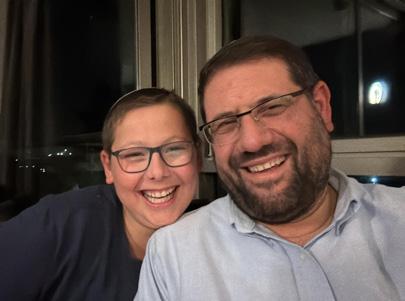
happens to all these laws?
This year, by the time you read this column, we will have experienced a modern Jewish holiday that follows in the footsteps of HaKadosh Baruch Hu’s sanctification of us. The 5th of Iyar, the date for Yom Ha’atzmaut, falls out on Shabbat this year, and yet, we do not celebrate it on the day of Shabbat. Instead, it is pulled back to Wednesday night-Thursday, allowing all to enjoy the national holiday without fear of violating Shabbat.
What’s fascinating is the many halachic questions that come up because of this. Many poskim in Eretz Yisrael believe that in a normal year, although many people avoid listening to music during Sefirat HaOmer, one is allowed to do so on Yom Ha’atzmaut. Additionally, many say that one should not say Tachanun on Yom Ha’atzmaut, and there is a great debate with many different opinions over whether to say Hallel on Yom Ha’atzmaut with a beracha or without a beracha. Yet, what about a year like this, when the day we celebrate is not the 5th of Iyar? What
The answer I heard from Rav Mordechai Eliyahu zt”l, the former Sephardic Chief Rabbi of Israel, is the following. We’re a Jewish state. The definition of a Jewish state is that not only are the days moved to make sure that there is no chillul Shabbat, but the halachic ramifications are moved as well, from the 5th of Iyar to the Thursday before. Therefore, if you hold not to say Tachanun on Yom Ha’atzmaut, don’t say it on Yom
May the Divrei Torah in this issue of Torah Tidbits be תמשנ יוליעל our dear father, grandfather, great-grandfather, and great-great grandfather
On his 50th Yahrzeit - רייאב ’ד
The Deutsch families of Moshav Yesodot, Jerusalem, Alon Shevut, Beit Shemesh, Spring Valley/Monsey
Ha’atzmaut this year as well. If you listen to music on Yom Ha’atzmaut, then enjoy it this year as well. If you say Hallel with a beracha, this year you should continue to say it loudly and proudly. This is a Jewish state, and this has very real ramifications, down to the moving of Yom Ha’atzmaut to prevent chilul Shabbat and all of its attendant laws and allowances as well.
Hearing this idea from a former Chief Rabbi of Israel who had endless joy on Yom Ha’atzmaut, and recognized the wonderful miracles that HaKadosh Baruch Hu did for us and continues doing for us, is one more thing that enables me to stand up and be so proud of the country that I live in that has the sensitivity of Shabbat, with a unique sensitivity of halacha that enables us to rejoice in a halachically permissible way.
Being able to share all of this with my son as he nears his Bar Mitzvah is incredibly meaningful. It is an understanding that living in the Land of Israel is not only a source of pride, but also a recognition of the miracle we are part of. We have a country that gathers Jews from all over the world and gives them a homeland. A land where we can live with an army that is kosher, an army that keeps Shabbat, and a government that is sensitive to Shabbat. While I fully acknowledge that there is still a long way to go, this is without a doubt a beautiful way to recognize the uniqueness of the State of Israel, our Jewish homeland, as we celebrate Yom HaAtzmaut.
Wishing you all an uplifting and inspiring Shabbat,

Rabbi Avi Berman
Executive Director, OU Israel aberman@ouisrael.org
TO SPONSOR A SHIUR CONTACT
Chana Spivack - 050-229-4951 or donate online: https://www.ouisrael.org/donate/ou-israel-center/
THE WOMEN’S ROSH CHODESH PROGRAM MON. APR. 28TH
Sponsored by Rena Markowitz in memory of:
RABBI BREITOWITZ’S SHIUR TUE., MAY 6TH
Sponsored by Rose Wolfeld in memory of her husband, Reuven ben Shmuel haLevi Wolfeld z”l on his 8th yahrzeit
RABBI GOLDSHIEDER’S SHIUR
WED. MAY 7TH
Sponsored by Reva Schertz in memory of Esther Sylvetsky a”h
RABBI BREITOWITZ’S SHIUR
Dedicated anonymously for the refuah shleima of Oksana bat Bluma and Evelina bat Galina
RABBI MANNING’S SHIUR
Sponsored for the 2025 academic year
RABBI GOLDSCHEIDER’S SHIUR
Sponsored for the 2025 academic year
RABBI ADLER’S SHIUR
Sponsored for this academic year by the Frist family in memory of their beloved daughter and sister Elisheva Frist
RABBI SHAI FINKELSTEIN’S SHIUR
Sponsored for the 2024-2025 academic year by the Sondhelm and Wertenteil Families in memory of Mel & Sylvia David z”l




















OU EXECUTIVE VICE PRESIDENT
We are counting towards Sinai, that time and place where we stood – in a description so familiar that it has become trite – k’ish echad b’lev echad, as one person with one heart. That count moves us through the Sefirah period when we mourn the deaths of the students of Rabbi Akiva who failed to treat each other with respect. We make that journey accompanied by the consistent study of Pirkei Avot, the section of the Mishna dedicated to explicit teachings of the derech eretz, the sterling traits and behaviors that are both prerequisite and characteristic of true Torah accomplishment.
The most valuable tool in building our
You are dearly missed by us all Your Daughter, Grandchildren Great-grandchildren, Nieces, Family, and Friends
interpersonal relationships is the power of speech. Communication is intended to build community, yet we often use it in ways that create rifts. This week’s double Parsha focuses extensively on tzora’at, the plague of leprosy that results from negative, divisive, and antisocial speech, lashon hara, such that the metzorah is condemned to live outside the community, michutz lamachaneh, and is even separated from his family. It is a poignant reminder of how negative communication not only isolates the individual from the community but divides us into opposing camps. We encounter these lessons immediately following Pesach. The villain of the Pesach story was the wicked King Pharaoh, who - as our Sages teach us - became a metzorah himself, with that condition serving as a pretense for his inflicting further torture on the Jews (Rashi to Shemot 2:23 based on Shemot Rabba 1:34). Pharaoh’s strategy (see Shemot ch. 5) was to isolate the Jews from any source of support such that they could not serve G-d and would see it as counter-productive to turn to Pharaoh for help. His systems turned Jews against each other, turned the community against its leadership, and even isolated husbands from their wives. Pharaoh was in that sense not only the king of Mitzrayim but also the king of the metzora’im
It is therefore on Pesach, the festival of our redemption from Pharaoh’s clutches, that we celebrate and build pro-social communication, the very opposite of the metzorah’s behavior. The Haggadah, literally “the telling”, is the holiday text we use to communicate our past to our future, with parents guided to use their power of speech to grow their children’s sense of identification with the story and experience of the Jewish nation. Even the name of the holiday is understood in mystical sources as celebrating speech, with peh-sach read as a composite of two Hebrew words meaning “the mouth speaks”. This is how we celebrate the redemption from Egypt, growing deep connection and trust through substantive and refined communication.
This is how the journey from Pesach to Sinai takes us through Sefirah with a stop at Tazria-Metzora. Beginning with the celebration of Pesach we enhance our communications with each other, speaking and listening in the ways that create community, building our personal derech eretz along with our interpersonal relationships by treating one another with respect, until we arrive at Sinai as one person with one heart, k’ish echad b’lev echad.


Ashkelon is the place
Now is the time Buying is what to do

In loving memory of Lilly Manheim




Thank you to all the TT advertisers who cooperated and worked with us and our earlier deadlines sending their ads on time over the last few weeks. Ita Rochel


Bricks tone specializing in safety deposit vaults is opening its new branch to residents of Jerusalem and surrounding areas in the Clal Building. At your service are safety deposit boxes of various sizes to s tore your valuables. The center is secured 24/7 at the most stringent international standards. The location and boxes are secured by Lloyds International.











ALIYA-BY-ALIYA
Aliya-by-Aliya Sedra Summary
Rabbi Reuven Tradburks
RABBI REUVEN TRADBURKS RCA ISRAEL REGION
RCA Israel Region
In memory of Evelyn Rivers a”h
Mother of Reuven Tradburks
The double parsha of Tazria-Metzora is challenging. Their theme is simple: one who is tamei may not enter the Mikdash. One who is tahor, may. We learn who becomes tamei. And the process by which one returns to being tahor.
The challenge is in understanding all the details. Why does a woman giving birth become tamei? Why this type of outbreak on the skin is tzaraat and this one not? Why are they restricted from entering the Mikdash? And why this particular combination of sacrifices is required for this one and a different combination for this? Listing these questions is easy; the explanations not so easy.
I will offer a modest suggestion to just one of these questions. I will propose a limited theory of Tuma and why it restricts entry to the Mikdash. Or put differently: what does the experience of the Mikdash demand of man, such that these various causes of Tuma get in the way? What is the experience of these causes of Tuma that interferes with what we need to be to enter the Mikdash? This is speculation; the Torah does not tell us the theory of Tuma. We can only speculate.
The Mikdash is the place of the rendezvous of man and G-d. The notion of finite man encountering the Infinite is frightening and
humbling. But it is also grand, magnificent. If G-d is inviting us to meet Him in His Home – well, He must think of us as worthy to meet. What a compliment to us! Man is His worthy partner? Wow. Man is majestic. Noble. Elevated. Distinguished. Unique. G-d invites majestic, noble man to the Mikdash.
However, this life that we live sometimes causes us to feel less than majestic. Not so noble. We sometimes feel beaten down, rather pedestrian, glorified animals. And in particular, we feel beaten down by those things that we share with animals: food, procreation, illness, death. When confronted by our limitations, the physicality we share with animals, our mortality, we can lose the nobility of our station. We can feel like glorious animals.
That may be the meaning of tuma. Perhaps Tuma is the state of bruised nobility. When man feels unconvinced that he is created in the image of G-d, when he doubts his part in a grand covenant, when he questions the nobility of the invitation to be His partner; perhaps that is what Tuma is. Bruised nobility.
The tuma in our parsha is what is called tuma whose source is our own body: childbirth, Tzaraat (loosely translated as leprosy), and emissions from procreative organs. These very earthy parts of our being can damage our sense of majesty, making us feel closer to animals than to angels.
The invitation to approach G-d in the Mikdash requires man in the fullness of his majesty. That invitation is suspended for the one
whose nobility is bruised, one who doubts his lofty station. That person needs nobility restored before approaching G-d. The process of becoming Tahor is the restoration of our lofty station. Man in the fullness of his majesty is required for the Divine rendezvous.
1ST ALIYA (VAYIKRA 12:1-13:23)
Childbirth renders a woman tamei (tmeya). At the end of the tuma, 40 days for a male, 80 days for female child, she brings an offering of an olah and a chatat. She may then enter the Mikdash. Tzaraat has different forms and different laws. It can be a white patch on the skin, with white hair, cover the entire body, or appear on a recovered inflammation. The Kohen checks to determine if it is Tzaraat or if it is an innocuous skin condition. Some appearances are unclear and require a 7-day interval to determine if Tzaraat or innocuous.
Childbirth is joyous; yet, the woman becomes tmeya, restricting her entry to the Mikdash. Along the theme mentioned above, experiences that we share with animals may damage our sense of the nobility of being human. Childbirth, though wonderful, is earthy. To recapture the higher nobility of humanity, the woman brings offerings, as a reboot, a reaffirmation of the higher calling in being human.
Tzaraat has many details. It appears as unusual colorations of the skin. The skin is the visible part of our bodies. The skin abnormalities of Tzaraat would make one self-conscious or embarrassed. The uniqueness of humanity over animals is our social nature. Being self conscious of our appearance would injure our social nature. This damage to our sense of nobility also demands a reboot in the form of a ceremony at the conclusion of the
Tzaraat, outlined in the later aliyot.
2ND ALIYA (13:24-39)
Tzaraat can also be found on skin that suffered a burn or on the head or beard. The Kohen assesses the nature of the discoloration determining whether it requires 7-day quarantine and reassessment to determine if tamei or tahor.
While this aliya continues the topic of the first aliya, as does the 3rd aliya, the breaks in the aliyot are deliberate. The first 3 aliyot all end with a verse declaring the person tahor. If we have an opportunity to be positive, let’s land on that, not a verse that declares the person tamei.
3RD ALIYA (13:40-54)
Tzaraat can also appear on the head or beard, with hair loss and skin discoloration. When a person is declared to have Tzaraat, he rends his garments, lets his hair grow, covers himself to his lips and dwells outside of the camp. Garments displaying specific discoloration are deemed to have garment Tzaraat. The Kohen assesses the color and shape, quarantining if necessary. If determined to have Tzaraat, the garment is burned.
After the detailed description of when a person has Tzaraat and when not, the consequence of Tzaraat is described. The person acts as a mourner would act: garment torn, hair grown, head covered (a practice we no longer generally observe as mourners). But more dramatically: he is sequestered out of the populated area.
This isolation is one of the things that prompts the midrashic comment that Tzaraat is for lashon hara – the punishment fits the transgression. If you can’t treat people respectfully, then spend some time alone.
Or, in line with the approach outlined above: proximity to G-d demands that we display the nobility of man. Tzaraat, an embarrassing discoloration that makes us feel self conscious, diminishes our sense of self. Isolation allows us to reflect on our self worth. Self worth has nothing to do with how we look to others, whether our skin looks good or whether our dress looks fine. Self worth is intrinsic; we have self worth simply because we are created in the image of G-d.
Clothing too is uniquely human. Clothing is an expression of human dignity. The tumah of a garment restricts the wearer from entry to the Mikdash, as human dignity is diminished by this oddly blemished garment.
4TH ALIYA (13:55-14:20)
The regulations of tuma of garments is completed. The process of becoming tahor following Tzaraat of the body is outlined. When the Kohen determines that the Tzaraat of the skin has subsided, the person with the Tzaraat may reenter the camp though for 7 additional days he may not enter the Mikdash. 2 birds are taken, one slaughtered, the other dipped into its blood, along with cedar wood, a red thread and hyssop. His hair is shaved. On the 8th day he brings offerings. Blood and oil are placed on his right ear, thumb and toe.
The details of the Tzaraat and the purification from it are numerous; too numerous to properly outline here. One detail though is worth mentioning. At the beginning of the return from quarantine of the person with Tzaraat, 2 birds are taken; one slaughtered, one not. This is not done in the Mikdash, as the person is out of the entire camp.
We have heard of the 2, one slaughtered, one not before. The 2 goats of Yom Kippur;
one slaughtered, one sent to the wilderness. And also, at the end of the process, blood and oil placed on the right ear, thumb and toe. That echoes what was done to the Kohanim in their inauguration – also on their 8th day. While the parallel to the Yom Kippur goats may make one feel contrite; the parallel to the inauguration of the Kohen would engender feelings of pride and a sense that I too am holy and priestly.
5TH ALIYA (14:21-32)
If one is unable to afford the above offerings, a less expensive alternative is offered, including birds in place of one of the animal offerings. A similar process to the one with 2 animals is performed. It makes perfect sense to have a sliding scale to accommodate the less wealthy people. After all, when our nobility is bruised in our external trappings – how we appear to others, how our clothing appears – our reintegration will emphasize not what we have but who we are. Animals for those who can afford, birds for those who can’t. Not what you bring, but that you bring.
6TH ALIYA (14:33-15:15)
In the land of Israel, homes will be subject to Tzaraat as well. The Kohen will examine the marks. If declared Tzaraat, all that is in the home becomes tamei, hence all shall be removed before the Kohen’s declaration. If the marks spread over the next 7 days, the Kohen shall order stones removed and replaced. If the spread persists, the Kohen may order the home demolished. If the Kohen declares the home tahor, 2 birds are taken, one slaughtered, the other dipped in its blood with cedar wood, a crimson thread and hyssop. The bird is set free. A Zav, a male, has a discharge from his organ
of procreation that is unusual. He renders others tamei and requires a purification process of 2 bird offerings at the end of 7 days.
Continuing our theme that tuma is associated with those parts of our lives that may hinder our sense of dignity, our home can be the source not of diminished dignity but of excess, of hubris. Oh, we moderns know all too well how the fantastic wealth of our times can inflate our sense of self worth. Man’s dignity lies not in the grandness of his home, but in the grandeur of his person. A pox on your house if it inflates human dignity to become hubris.
7TH ALIYA (15:16-33)
A regular sexual discharge of a man renders a low level of tuma. A woman’s regular menstrual bleeding renders her temeya for 7 days, transferring her tuma to others including through touch. A woman who has bleeding inconsistent with her regular period is a Zava, a similar Tuma to the male Zav. Offerings are brought following the cessation of this unusual bleeding.
Procreation may also lead to an inflated self image; creation is not just His, but is ours. He gives life. We give life. Healthy self image of our dignity and majesty can be damaged by our physicality in both directions; deflated and inflated. Too low a view, that we are nothing more than animals. Or too high, as creators, leaving less room for the Creator.
2 KINGS 7:3-20
This week’s haftorah contains a direct link to the two parshiot in that it tells the story
of metzoraim, people with tzaraat. What is remarkable about the haftorah’s episode is that it tells of metzoraim who performed a great service to the nation.
Four men suffering from the ailment of tzaraat were dwelling in quarantine outside of the city. At some point they decide that they will approach the enemy camp and see if they can procure some food. When they arrive, they are startled to see that the enemy battalion has fled. The camp is deserted.
At that moment they realized that they had a critical message to convey to their nation. The four men went to the city and reported their findings to the gatekeepers who, in turn, informed King Jehoram. The King sent messengers who confirmed the miracle. The people of Israel quickly left their cities and looted the enemy camp. Remarkably, they were saved from a famine and imminent death.
This entire incident was a fulfilment of the prophecy fo Elisha HaNavi who said just a day earlier as a reassurance to the King: “So has God said, ‘At this time tomorrow, a seah of fine flour will sell for [merely] a shekel, and two seahs of barley will sell for a shekel in the gate of Samaria.”
In loving memory of our father, grandfather, great-grandfather and great-great-grandfather
GrampyDr. Bernard Friedson z”l
on his 18th yahrzeit - 6 Iyar
Arlene Saslow and the entire Friedson and families
BY RABBI CHANOCH YERES RAV, BEIT KNESSET BEIT YISRAEL, YEMIN MOSHE
“When you come into the land of Canaan...and I put the plague of leprosy in a house of the land of your possession.” (14:34) Rashi explains by quoting the Midrash Vayikra Rabbah 17. The Amorites would hide their treasures in the walls of their homes so that the Israelites would not find them. After forty years in the desert, when the Israelites conquered the Land, due to the plague on their house, forcing demolition of the structure, the treasures would be discovered. If G-d wanted to reward the Israelites with treasures, why do it in such an indirect fashion and unusual way?
The Sefat Emet (Rabbi Yehuda Leib Alter, Admur from Gur, 1847-1905) discusses how a person’s home is an insight into their self-being. Everything one owns should be adopted with spirituality to promote observance of the Torah and connection to G-d. This was the mission of the Israelites as they moved to inhabit the Land of Israel. They were to take all the mundane physical elements and turn them and the entire land into a platform and method of serving G-d, in a holy way. This was the message given to the Israelites as they prepared to enter the Land. Just as G-d could have presented you directly with gold and silver upon entering the Land, rather G-d chose that they had to discover the wealth within those very homes they would begin to inhabit in the Land of Israel. From here the Israelites would learn the need for them to rededicate all their mundane possessions like homes for holy purposes, to serve G-d.
Shabbat Shalom

Tzitzit tying with Ruti Beit Knesset HaNassi, 24 Ussishkin no experience needed Mondays 1:15-4pm Wednesdays 12-3pm




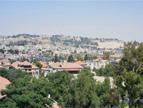
and our next step will be to plant a fruit tree. I never thought of myself as being the agricultural type, but the feeling of settling and planting a portion of Eretz Yisrael, has been truly euphoric. Iy”H, when we plant our tree, and eat the fruits that will grow one day, I think we will be able to truly appreciate that unique Kedusha found in the fruit of Eretz Yisrael!



Beautiful Building, 90 SQM, spacious, Bright, Shabes elevator, 2 Balconies, completely furnished high level ,Stunning straight View to Har Habait.place for Sukah, Guard 24/7, Private Parking.
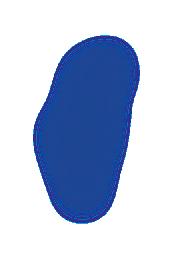
To conclude, when you buy your Tu B'shvat fruit this year, don’t search for those dried apricots and banana chips imported from Turkey. Rather, head over to the fresh produce and buy yourself some nice juicy Kedusha-filled Jaffa oranges and thank Hashem for bringing you to this land in to be able to הבוטמ
Katamon stunning 5 Room property, 2 full bathrooms , High end renovation , elevator, private
imbibing that Kedusha in every bite that


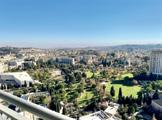





BY RABBI DR. TZVI HERSH WEINREB OU EXECUTIVE VICE PRESIDENT, EMERITUS
BY RABBI DR. TZVI HERSH WEINREB OU EXECUTIVE VICE PRESIDENT, EMERITUS
He was a character straight out of the novels of Charles Dickens. Scholars have long found Dickens’ attitude toward Jews problematic. The character Fagin in the novel Oliver Twist is certainly a negative stereotype. But many are unaware of the character named Riah in Dickens’ last completed novel, Our Mutual Friend. Riah is portrayed as a proud Jew, honest, wise, compassionate and courageous.
Pinkus always reminded me of Riah. He was a Holocaust survivor with no family, who eked out a livelihood by peddling his wares from door to door in Jewish neighborhoods. Such street peddlers were commonplace several generations ago, and he was among the last of them. He occasionally visited the Brooklyn neighborhood in which I grew up, but I knew him best from the lower East side where I went to yeshiva.
I no longer recall his real name, but we called him Pinkus because of a then-popular but now long-forgotten Yiddish song about Pinkus the Peddler.
We would buy our school supplies and other amenities from him, mostly out of sympathy. But those of us who had the patience to listen to his tales were more intrigued by his conversation than by the quality or price
of his wares. Like Riah the Dickens character, he was proud, honest, wise, compassionate and courageous.
He discussed neither his Holocaust experiences nor his ultimate rescue. Rather, he plied us with riddles about the Bible and Talmud and was a treasure trove of anecdotes about the people he knew from what he called “my world which is no more.”
Much later, I discovered another peddler in our own tradition, so that I no longer needed to identify just Pinkus with Riah. This peddler of old was one from whom not I, but none other than the Talmudic sage Rabbi Yannai, learned a great deal. And that brings us to the second parsha of this week’s double Torah portion, Tazria-Metzora.
This week we will read in comprehensive detail about the metzora, the person inflicted with blemishes of the skin often translated as leprosy. In the Bible, and even more so in the Talmud and Midrash, these blemishes are seen as Divine punishment for sins of speech: malicious gossip, slander, and defamations of character – so much so that the very word metzora is said to be a contraction of the words “motzi ra,” “he who spreads evil.”
Hence the anecdote described in the Midrash Rabbah associated with this week’s Torah portion:
It once happened that a certain peddler was wandering from town to town and crying out, “Who wishes to buy a life-giving potion?” Rabbi Yannai heard this man’s shouting and called upon him for an explanation. The
peddler took out the book of Psalms and showed Rabbi Yannai the verse: “Who is the person who desires life, loving each day to see good? Then guard your tongue from evil and your lips from speaking deceit. Turn from evil and do good; seek peace and pursue it.”
Rabbi Yannai exclaimed, “All my life I have been reading this verse and never quite understood what it meant, until this peddler came and explained it… Therefore, Moses admonished the Jewish people and said to them these are the statutes of the ‘metzora,’ the statutes of the ‘motzi shem ra,’ the bearer of malicious gossip.”
From time immemorial, commentators have struggled with the question, “What did the peddler say that Rabbi Yannai did not already know?” Rabbi Yannai, by his own testimony, had read the book of Psalms many times. The meaning of the verses quoted seems to be self-evident. What could this peddler have added to Rabbi Yannai’s understanding?
Permit me to share with you one approach to demystifying this passage in the Midrash. It is drawn from a work by Rabbi Shlomo Yosef Zevin, a very insightful 20th century rabbi who lived and wrote in Israel. He reminds us of a teaching by Maimonides to the effect that there are similarities between physical health and illness and moral health and illness.
Taking that analogy further, Rabbi Zevin reminds us that there are foods for healthy people which those who are ailing can simply not digest. They need to first ingest medicine, healing foods, before they are ready for a proper diet.
Similarly, before one can embark upon the proper moral life, he or she often needs to first be healed from a prior tainted moral status.
Thus, before one can live a life of “turning from evil and doing good; seeking peace and pursuing it,” which is a normal healthy moral life, it is often necessary to first wean himself from habitual immoral practices which are typically very resistant to change.
Hence the ingenious insight of the peddler Rabbi Yannai heard. “Do you want to know the secret of a long life? Of a properly lived life of doing good and pursuing peace? Then first you must guard your tongue from evil. That is the secret potion, the healing medicine which will enable you to go on to the next step, moral health.”
In this analysis, correcting one’s patterns of speech is a therapeutic process, a life-giving potion; not a food, not the bread of life.
Only after this pernicious but pervasive fault is corrected, only after this moral disease is cured, can a person actively engage in the next verse in Psalms: “Turn from evil and do good…”
Rabbi Yannai was accustomed to reading these verses differently. He understood the question, “Who desires life?” But he thought that there was one compound answer: guard your tongue, turn from evil, and do good.
The peddler taught something much more profound. The answer to “Who desires life?” is a complex one. It consists of stages, the first of which is a healing process acquired by ingesting the potion of good speech. Then one can move up to the next stage, living a full and healthy moral life.
Pinkus the peddler taught me a lot when I was but a teenager. What I did not realize then was that he was following a long and honored tradition of itinerant peddlers who peddled not just trivial commodities, but words and wares of wisdom.

RABBI LORD JONATHAN SACKS ZT"L
RABBI LORD JONATHAN SACKS ZT"L
FORMER CHIEF RABBI OF THE UNITED HEBREW CONGREGATIONS OF THE COMMONWEALTH
FORMER CHIEF RABBI OF THE UNITED HEBREW CONGREGATIONS OF THE COMMONWEALTH
May the learning of these Divrei Torah be תמשנ יוליעל HaRav Ya'akov Zvi ben David Arieh zt"l
The sidrot of Tazria and Metzora contain laws which are among the most difficult to understand. They are about conditions of “impurity” arising from the fact that we are physical beings, embodied souls, and hence exposed to (in Hamlet’s words) “the thousand natural shocks that flesh is heir to.”
Though we have immortal longings, mortality is the condition of human existence, as it is of all embodied life.
Rambam explains:
We have already shown that, in accordance with the Divine wisdom, genesis can only take place through destruction, and without the destruction of the individual members of the species, the species themselves would not exist permanently . . . He who thinks that he can have flesh and bones without being subject to any external influence, or any of the accidents of matter, unconsciously wishes to reconcile two opposites, namely, to be at the same time subject and not subject to change. (Maimonides, Guide for the Perplexed, III:12)
Throughout history there have been two distinct and opposing ways of relating to this fact: hedonism (living for physical pleasure) and asceticism (relinquishing physical pleasure). The former worships the physical while denying the spiritual, the latter enthrones the spiritual at the cost of the physical.
The Jewish way has always been different: to sanctify the physical – eating, drinking, sex and rest – making the life of the body a vehicle for the Divine Presence. The reason is simple. We believe with perfect faith that the God of redemption is also the God of creation. The physical world we inhabit is the one God made and pronounced “very good.” To be a hedonist is to deny God. To be an ascetic is to deny the goodness of God’s world. To be a Jew is to celebrate both creation and Creator. That is the principle that explains many otherwise incomprehensible features of Jewish life.
The laws with which the Parsha begins are striking examples of this:
When a woman conceives and gives birth to a boy, she shall be teme’ah for seven days, just as she is during the time of separation when she has her period . . . Then, for thirty-three additional days she shall have a waiting period during which her blood is
ritually clean. Until this purification period is complete, she shall not touch anything holy and shall not enter the Sanctuary.
If she gives birth to a girl, she shall have for two weeks the same teme’ah status as during her menstrual period. Then, for sixty-six days after that, she shall have a waiting period during which her blood is ritually clean.
She then brings a burnt-offering and a sin-offering, after which she is restored to “ritual purity.” What is the meaning of these laws? Why does childbirth render the mother teme’ah (usually translated as “ritually impure”, better understood as “a condition which impedes or exempts from a direct encounter with holiness”)? And why is the period after giving birth to a girl twice that for a boy?
There is a temptation to see these laws as inherently beyond the reach of human understanding. Several rabbinic statements seem to say just this. In fact, it is not so, as Maimonides explains at length in the Guide. To be sure, we can never know – specifically with respect to laws that have to do with kedushah (holiness) and teharah (purity) –whether our understanding is correct. But we are not thereby forced to abandon our search for understanding, even though any explanation will be at best speculative and tentative.
The first principle essential to understanding the laws of ritual purity and impurity is that God is life. Judaism is a profound rejection of cults, ancient and modern, that glorify death. The great pyramids of Egypt were grandiose tombs. Arthur Koestler noted that without death “the cathedrals collapse, the pyramids vanish into the sand,


Jerusalem Real Estate is My Business Eta: 054-723-3863
Amazing stand alone homes in OLD KATAMON, TALBIYA, BAKA, GERMAN COLONY
BAKA. Mini penthouse. Built 89 sqm as 2 bedrooms and 2 full bathrooms. High ceilings, amazing views outdoor space 56 sqm including pool!!! Shabbat elevator all day, 2 reg parking spaces plus storage. Living space all on one floor from elevator. Pool upstairs. Great property.
Price: 5,900,000 NIS
OLD KATAMON. 174 sqm primary residence, large garden in use, fully accessible, 4 bedrooms. Plus a studio of 19sqm. 9,500,000 NIS.
Rental in BAKA
Gedalia 4. 200 sqm 4 bed 4 bathroom. Fully furnished (optional). One other apt on floor.
18,000 NIS/month
180 sqm Penthouse on an exclusive street in ARNONA. 40 sqm balcony, registered parking. Very high standard finish. 9,550,000 NIS
Exclusive BAKA. Mordechai Hayehudi. 107 sqm plus permit for 73 sqm & terrace. Sukkah terrace main floor. Elevator, pkg, storage. 6,800,000 NIS






Eta Morris Realty, Ltd. etamorrisrealestate@gmail.com Eta: 054-723-3863 etamorrisrealty.co.il
the great organs become silent.” The English metaphysical poets turned to it constantly as a theme. As T. S. Eliot wrote:
Webster was much possessed by death
And saw the skull beneath the skin... Donne, I suppose, was such another...
He knew the anguish of the marrow
The ague of the skeleton...
Freud coined the word thanatos to describe the death-directed character of human life. (Whispers of Immortality by T. S. Eliot)
Judaism is a protest against death-centred cultures. “It is not the dead who praise the Lord, nor those who go down into silence” (Psalm 114) “What profit is there in my death, if I go down into the pit? Can the dust acknowledge You? Can it proclaim your truth?” (Psalm 30). As we open a Sefer Torah we say: “All of you who hold fast to the Lord your God are alive today” (Deut 4:4). The Torah is a tree of life. God is the God of life. As Moses put it in two memorable words: “Choose life” (Deut. 30:19).
It follows that kedushah (holiness) – a point in time or space where we stand in the unmediated presence of God – involves a supreme consciousness of life. That is why the paradigm case of tumah is contact with a corpse. Other cases of tumah include diseases or bodily emissions that remind us of our mortality. God’s domain is life. Therefore it may not be associated in any way with intimations of death.
This is how Judah Halevi explains the purity laws:
A dead body represents the highest degree of loss of life, and a leprous limb is as if it were dead. It is the same with the loss of seed, because it had been endowed with living power, capable of engendering a human
being. Its loss therefore forms a contrast to the living and breathing. (The Kuzari, II:60)
The laws of purity apply exclusively to Israel, argues Halevi, precisely because Judaism is the supreme religion of life, and its adherents are therefore hyper-sensitive to even the most subtle distinctions between life and death.
A second principle, equally striking, is the acute sensitivity Judaism shows to the birth of a child. Nothing is more “natural” than procreation. Every living thing engages in it. Sociobiologists go so far as to argue that a human being is a gene’s way of creating another gene. By contrast, the Torah goes to great lengths to describe how many of the heroines of the Bible – among them Sarah, Rebecca, Rachel, Hannah and the Shunamite woman – were infertile and had children only through a miracle.
Clearly the Torah intends a message here, and it is unmistakable. To be a Jew is to know that survival is not a matter of biology alone. What other cultures may take as natural is for us a miracle. Every Jewish child is a gift of God. No faith has taken children more seriously or devoted more of its efforts to raising the next generation. Childbirth is wondrous. To be a parent is the closest any of us come to God himself. That, incidentally, is why women are closer to God than men, because they, unlike men, know what it is to bring new life out of themselves, as God brings life out of himself. The idea is beautifully captured in the verse in which, leaving Eden, Adam turns to his wife and calls her Chavah “for she is the mother of all life.”
We can now speculate about the laws relating to childbirth. When a mother gives birth,
she undergoes great risk. Throughout the centuries, childbirth has been a life-threatening danger to mother and baby alike, and even today there are ever-present risks for many. Furthermore, during the process of childbirth, a woman is separated from what until now had been part of her own body (a foetus, said the rabbis, “is like a limb of the mother”) and which has now become an independent person. If that is so in the case of a boy, it is doubly so in the case of a girl – who, with God’s help, will not merely live but may herself in later years become a source of new life. At one level, therefore, the laws signal the detachment of life from life.
At another level, they surely suggest something more profound. There is a halachic principle: “One who is engaged in a mitzvah is exempt from other mitzvot.” It is as if God were saying to the mother: for forty days in the case of a boy, and doubly so in the case of a girl (the mother-daughter bond is ontologically stronger than that between mother and son): I exempt you from coming before Me in the place of holiness because you are fully engaged in one of the holiest acts of all, nurturing and caring for your child. Unlike others you do not need to visit the Temple to be attached to life in all its sacred splendour. You are experiencing it yourself, directly and with every fibre of your being. Days, weeks, from now you will come and give thanks before Me (together with offerings for having come through a moment of danger). But for now, look upon your child with wonder. For you have been given a glimpse of the great secret, otherwise known only to God.
Childbirth exempts the new mother from attendance at the Temple because her bedside replicates the experience of the Temple.
She now knows what it is for love to beget life, and, in the midst of mortality, to be touched by an intimation of immortality.
These weekly teachings from Rabbi Sacks zt”l are part of his ‘Covenant & Conversation’ series on the weekly Torah teaching. With thanks to the Schimmel Family for their generous sponsorship, dedicated in loving memory of Harry (Chaim) Schimmel. Visit www.RabbiSacks.org for more.

Trusted US/Israeli tax services for over 30 years
Trusted US/Israeli tax services for over 30 years
• U.S. & Israeli Tax Returns and Planning
• U.S. & Israeli Corporate Tax Returns and Planning
• U.S. & Israeli Tax Returns and Planning
• U.S. & Israeli Bookkeeping & Accounting Services
• U.S. & Israeli Corporate Tax Returns and Planning
• U.S. & Israeli Retirement and Benefits Consulting
• U.S. & Israeli Bookkeeping & Accounting Services
• IRS and Israeli Tax Authority Audit Representation
• U.S. & Israeli Retirement and Benefits Consulting
• IRS Streamlined Filing Program
• IRS and Israeli Tax Authority Audit Representation
• Estate and Trust Tax Planning
• IRS Streamlined Filing Program
• Foreign Bank Reports (FBAR)
• U.S. Child Credit
• Estate and Trust Tax Planning
• Foreign Bank Reports (FBAR)
• Other Accounting Services
• U.S. Child Credit
• Other Accounting Services
It’s never too late to file prior years’ taxreturns!
It’s never too late to file prior years’ taxreturns!
Trusted US/Israeli tax services for over 30 years It's never too late to file prior year's tax returns!
Please contact us: 02-999-2104 | 09-746-0623 |03-527-3254 | 052-274-9999
Email: alan@ardcpa.com www.ardcpa.com
Please contact us: 02-999-2104 | 09-746-0623 |03-527-3254 | 052-274-9999 Email: alan@ardcpa.com www.ardcpa.com

IN THE CITY CENTER – BEZALEL ST
Near Bezalel Art School, beautiful 2-room apartment, quiet & attractive, 2 private entrances, sukkah balcony. Near cultural centers, cafes, shops, Exclusive! Liora 055-4311969
IN THE GERMAN COLONY
Beautiful & spacious 119sqm, 4-room garden apartment, new building, fully accessible, surrounding garden & courtyard, perfect location: near quality schools & synagogues, shops & cafes, museums – theaters & cinemas, community & cultural centers. Exclusive! Matan 053-4644480
A beautiful spacious 3 room apt., nice sukkah terrace, view, quiet & pastoral, fully accessible, private storage, 2 parking spaces. Near American Embassy, shops. Exclusive! Anita 053-6318355

IN THE HEART OF YEMIN MOSHE
2.5 room apartment, authentic building, arched windows, easy access from parking (no steps!), convenient & efficient design, near green parks, synagogues, the Cinematheque, the Khan Theatre, the Old City, the 1st Station & Mamilla shopping & entertainment centers, major luxury hotels & more. Exclusive! Galila 0536642512

3 Moshe Hess St., Jerusalem 0778038511


Now taking reservations for July/August for the perfect family getaway in the Lower Galilee!
Well appointed kosher home with indoor/outdoor kitchens 15m pool, gorgeous grounds Space for 40 people







BY RABBI NACHMAN (NEIL) WINKLER FACULTY, OU ISRAEL CENTER
As the haftarot taken from Nevi’im Acharonim (the later prophets), whose ancient words of morality, critique or comfort have educated, improved and comforted later generations, so too the haftarot taken from Nevi’im Rishonim, (the earlier prophets) with tales from our history have left important messages for the future generations. And that is certainly true of this week’s selection from the seventh perek in Sefer M’lachim B.
The story that unfolds in the haftarah is a seemingly simple one yet requires some background to fully understand. The northern tribes of Israel, and their king Yehoram, suffered under the thumb of their powerful northern neighbor, Aram for years. When the Aramean king Ben-Haddad besieged the Israelite capital of Shomron, famine raged in the city and many of the residents were starving. While Yehoram attempted to give courage and hope to his people he was accosted by a local woman who related the horrific story of she and another woman had agreed, due to their hunger, to eat the flesh of their children. Upon hearing the story, the king tore his royal garments, and, in anger, sought out the navi Elisha, whom he blamed for the tragic situation. The prophet responded by promising the population that there would soon be more than enough food for
the starving residents of Shomron – a promise mocked by the king’s captain.
Our haftarah opens by continuing the story and telling of four “metzora’im” (hence, the connection to our parasha), who, upon discovering that the besieging enemy had fled, report the news to the Kng and, by dawn’s light, the starving people rush to the abandoned camp and ease their hunger. And, indeed, just as Elisha had promised, there was a surplus of food for all.
A nice story….but something is missing: Where is G-d?
Yes, it is true that we can clearly see His hand in all of these events:
• In the famine that overtook the residents of Shomron
• In the involvement of the navi, Elisha
• In the mysterious flight of the Aramean army
• In the Metzora’im’s discovery of their absence
• In the salvation of the starving population through the food left by the enemy It is obvious that Hashem was present throughout the story!
But what did the citizens see?
Did they see Hashem’s involvement?
Did they marvel at His miracles?
Did they appreciate His salvation??
It certainly doesn’t appear that they did!
• Throughout their distress, we find no prayers or pleas being offered to Hashem.
• The King tells the starving woman that he couldn’t help because Hashem wouldn’t
help - and yet, he never asks G-d for help!
• The King attributes their misery to Elisha (!) while never asking the prophet what Hashem wants of the people.
• Elisha is even mocked by the King’s guard who doubts Hashem’s ability to save Israel: “Will G-d make windows in heaven? Can such a thing ever happen?”
• And when the miracle does occur, no prayers of thanksgiving or praise were offered by the people.
It seems that, to this population, G-d was “missing”! -but, -in truth, it was they who were missing G-d.
When you are blind to Hashem’s demands, or deaf to His entreaties, you might soon be oblivious to His kindnesses and to His miracles as well. And if that occurs, you lose any awareness of His very presence – hence, for you, G-d is “missing.”
Each day we turn to Hashem and thank Him for His daily wonders - “Al nissecha….. sheb’chol yom immanu” – just so that we don’t fall victim to the mistaken belief that Hashem is “missing” from our lives. We are enjoined to remember the gift of life, the wonder of birth, the joy of friendship – that all are, miracles showered upon us b G-d.
On this week of Yom Ha’atzma’ut it is essential to realize that, if you are part of this nation, if you are amazed by her survival, and you revel at her return… and yet you feel that G-d is, “missing” – then allow me to enlighten you: Hashem is never missing. ……….But you, my friend, are missing everything!
Rabbi Winkler’s popular Jewish History lectures can be viewed by visiting the OU Israel Video archive: https://www.ouisrael.org/video-l ibrary












Rabbi Shalom
The kohen shall go outside the camp, and the kohen shall look, and behold, the lesion of tzara’at has healed in the afflicted person. (Vayikra 14:3)
WHY THE KOHEN?
When we examine the parsha of the Metzora, there is an intriguing phenomenon. The kohen assumes the role of a diagnostician or nurse. The Kohen is the only individual who can pronounce one to be inflicted with Tzara’at (leprosy for lack of a better translation). He declares the suspect clean or unclean. Why is this task assigned to the Kohen? It is something a doctor or other healthcare expert may be even more equipped to fulfil.
There are many forms of impurity in the Torah. A nidda question need not be resolved by a Kohen – any Torah scholar with expertise in that area can declare a women clean or unclean. Why does the Torah assign the task to the Kohen when
it comes to determining the status of one inflicted with Tzara’at?
Rav Yosef Dov Soloveitchik (Masoret Harav) offers the following insightful explanation. Consider historically how society dealt with leprosy. In many civilizations, one who was inflicted with leprosy was cast away, at times to a distant island or town. There was tremendous fear of coming into contact with an individual who exhibited symptoms of such a contagious illness. The sick person quickly lost his dignity and became isolated from society.
In contrast, what is the Jewish approach? Often, people focus on the fact that being inflicted with tzara’at is a form of punishment for having engaged in lashon harah (badmouthing another) and so, he is excommunicated, as a mida- knegged- mida. He sought to isolate another, his punishment is to be removed from the community. However, at the same time, who is the individual who remains in contact with the leper? It is the Kohen, who often served as the teachers and spiritual leaders of the community. A man who was not permitted to attend the funeral of a close friend, lest he become impure, is charged with communicating and caring for the person inflicted with tzara’at.
Perhaps the Torah is offering us an important lesson. Although the leper is
excommunicated, the kohen, as the priest and spiritual leader, assures the leper that he is needed and when healed, will be welcomed back into society. The kohen acts for the needs of the people. Especially people who hold high positions in the community must never abandon their fellow Jew. May this message resonate with us during these challenging times. No one, no matter their position, is exempt from helping others in need. Families of hostages, families of soldiers that were killed or injured, families that were uprooted from their homes, should never feel isolated. Each and everyone of us ought to consider ways of assisting and encouraging others in need. The kohen assisted the leper, may we assist our fellow Jew and unite as a people so that we can merit the geula!



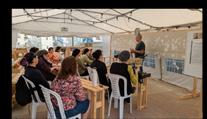










Live in a Historical Home in Ein Kerem for a Great Price!
Beautiful duplex apartment in the heart of Ein Kerem, 125 sqm, 4.5 rms, 1.5 baths, large rooms with domed ceilings, balcony with view over the neighborhood, close to shops, cafes and public transportation, well maintained condition, lots of potential! Priced to Sell: NIS 3,650,000
Long Term Rental in Caspi Residence on Hanoch Albeck St
Bright and airy 3 room apt, 83 sqm., large sukkah balcony, shower and two toilets, 3 air directions, shabbat elevator, underground parking, includes appliances. Available immediately NIS 7500/month







Refined Living With 5 Star Hotel Facilities

ART OF LIVING IN PRIME TALBIEH
Exquisitely furnished upscale apartments built to the highest standards
Variety of apartment sizes ranging from 170 sqm to 420 sqm | Private gardens, large sukkah terraces, unique Penthouse
Experience Luxury & Comfort with MGallery
Hotel facilities: Indoor Pool | CLARINS Spa & Fitness Center | 24/7 Security | Room Service
Chef Restaurant





Tzara’at, the biblical spiritual malady, had the remarkable quality of affecting not only a person’s body, but the walls of his home as well. The Torah describes how the owner of such a home is required to remove the afflicted stones and replace them with new ones. This destruction brought two significant blessings in its wake.
Rashi offers the classic approach based on the Midrash. During the forty years of the Jews’ sojourn in the desert, the nations living in Canaan hid their valuables in the walls of their homes so that when Am Yisrael arrived in the land, they would not find them. When these structures were destroyed because of the tzara’at affliction, these valuables were discovered, fulfilling the Divine promise, “Vehaya ki yivi’acha Hashem Elokecha el ha’aretz … latet lach … batim melai’im kol
Attached cottage 250m, Four storeys, front & back garden, separate rental unit, spacious kitchen
Asking 4.35 million shekel
For more info contact Benjie: 0544-882194
tuv… - and it will be when Hashem will bring you to the land … to give you … houses full of all good things…” (Devarim 6:10-11) We see clearly here the exactitude of Divine Providence. Each Jew who had tzara’at on the walls of their homes consequently received valuables that were allotted especially for him. Further, although the Emorites believed that they could hide their valuables, Hashem in His infinite wisdom ‘redirected’ their plans to benefit His children.
From a spiritual perspective, the Zohar reveals that speech and thought have tremendous power in the construction of materials, objects, and structures. Hence, when building the Mishkan the artisans, builders and craftsman would say, “this is for the parochet…,” infusing each element with extra sanctity. Conversely, when the Canaanite nations built their homes in Eretz Yisrael their idolatrous designations saturated the houses with impure energy and created a spiritually contaminated atmosphere. When Am Yisrael, who were spiritually elevated, came into the land and took residence in these homes, Hashem sent tzara’at so these structures would be destroyed and rebuilt with holiness.
The Mishnah in Avot teaches, “Two who sit and no words of Torah pass between them, it is considered a session of scoffers.” (Avot 3:2) In a novel interpretation we can posit that previously, scoffers sat there, permeating the space with negativity and affecting anyone who would then occupy the same area. A
story is told about Rav Elchanan Wasserman Hy”d, who was being driven through the streets of New York. At one point they passed a neighborhood that was known for its indecency and promiscuity. Rav Elchanan became very agitated, feeling the intense impurity. Although we may not have the same sensors, we can try and create environments that are permeated with kedushah and taharah that will positively affect those around us. Looking superficially, the Jew could have complained when their houses needed to be destroyed. Yet, if we recognize that our spiritual vision is limited, we gain a broader perspective. We may not understand why we undergo afflictions or experience difficulties, but we can acknowledge that there is a larger picture that Hashem is orchestrating with magnificent exactitude and love.





That if you are a US citizen who owns an Israeli company, there are special US tax reporting requirements in the US.
That if the reporting is incorrect, there may be significant penalties and you might be paying more tax than necessary. Additionally, strategic planning may allow you to further reduce taxes.


Executive Director, Camp HASC Author of Baderech: Along the Path of Teshuva (Mosaica 2021)
Mischel EXECUTIVE DIRECTOR, CAMP HASC AUTHOR OF BADERECH SERIES
Visitors to the historic Kazimierz district, the Jewish quarter of Cracow, are familiar with one of the ghetto’s most iconic places, Isaac Synagogue, on 18 Kupa Street.
It is also known as ‘Reb Isaac Reb Yekel’s Shul’ in honor of the special Yid who built it in 1644, Reb Isaac ben Reb Yekel of Cracow. When the Germans occupied this historic shul, they destroyed the interior and furnishings, including the bimah and Aron Kodesh, but today the shul has been restored and is active, and it is a meaningful attraction for visitors.
The revolutionary Chasidic master, Reb Simcha Bunim of Peshischa encouraged his followers to focus on self-development through Torah study, individuality and a search for truth. Eschewing miracle-making and dependance on one’s Rebbe, Reb Bunim insisted that closeness with the Ribono Shel Olam depends on pnimiyus, internal

resources. He challenged his chasidim to search for self-reliance and to discover their own individual path in avodas Hashem, through hard work, intensive study and excavating their own inner world. It is said that Reb Bunim would relate the ma’aseh of Reb Isaac ben Reb Yekel to new adherents interested in joining his court in Peshischa: Reb Isaac was an ehrlich, righteous Jew who lived by his faith. While struggling to make ends meet, he faced his poverty with emunah, doing his best to remain joyful and positive. One night, Reb Isaac dreamt of a chest filled with gold, a buried treasure, hidden under a bridge in far away Prague. He awoke with a start, chuckled to himself and paid the fantastical dream no attention. But when the strange dream repeated itself again and again, Isaac began to wonder… could it possibly be true? Perhaps this was a sign, a message from on high, urging him to search out his fortune. But in Prague? Under a bridge?
After a few nights of experiencing the same vivid dream, Reb Isaac set off, baderech. Arriving in the foreign land, he discovered that there was only one bridge in Prague: the famous Charles Bridge, which connected the city to the royal palace. This structure was under constant surveillance, heavily guarded by soldiers. Digging under the bridge was
clearly out of the question.
After having made the arduous journey, however, Reb Isaac was not going to give up so easily. Day after day he checked to see if there was an opportunity to dig, until one of the guards confronted him and demanded an explanation for his loitering. “What exactly are you doing hanging around here every day under the bridge?” Reb Isaac, a good, honest man, told the guard the truth about his dream and vision of treasure buried under Charles Bridge.
The guard could barely control his laughter: “What a fool you are! Coming all this way to follow a silly dream? You must be crazy! Listen, I myself had a dream some time ago that some Jew from Cracow named ‘Isaac’ has a chest of treasures buried under his hearth. I’d have to be completely crazy to pay attention to a nonsensical dream like that, and yet here you are on some wild good chase looking for gold under the king’s bridge? What did you say your name was and where were you from?”
Without a word, Reb Isaac turned and ran as fast as he could to his carriage and sped back to Cracow. Arriving home, he began digging frantically under his hearth, practically demolishing the kitchen. His wife thought he’d gone crazy, but to Reb Isaac’s amazement, right there, under his own house, was a chest filled with precious stones and coins. Overwhelmed with gratitude to Hashem, Reb Isaac used some of his newfound wealth to dedicate a beautiful shul to benefit his com munity in Cracow that bears his name until today.
Our sedra (14:33-57) details the process of recognizing and identifying tzaraas
Are you getting the keys to your apartment and don’t plan to reside in Ashkelon right now?
I live and work full-time in Ashkelon. Call me to perform mandatory insurance inspections, manage, rent or sell your Ashkelon property.

- including when the spiritual affliction is found in one’s home:
“When you come to the land of Canaan, which I am giving you as a possession, and I place a lesion of tzara’at upon a house in the land of your possession… the kohen shall order that they remove the stones upon which the lesion is [found], and they



shall cast them away outside the city, to an unclean place.”
At first glance, demolishing one’s home because of tzaraas may seem a bit crazy. However, Rashi (14:34) points out the blessing in disguise for Am Yisrael: when the C’naani dwellers of Eretz Yisrael understood that they would be expelled from the Land, they hid their precious valuables in the walls of their houses. When the Jews entered and conquered the Land, they moved into the homes of the Canaanites, unaware of the treasures hidden within the walls. It was only when the tzaraas appeared and they performed the mitzvah of demolishing the ‘infected’ walls, the hidden treasure was revealed.
A Yid discovering hidden treasures had sometimes been living in poverty, struggling to make ends meet, not realizing that he was in fact a tremendously wealthy person all along.
And this was Reb Simcha Bunim’s intention in sharing the maaseh of Reb Isaac ben Reb Yekel. We so often seek solutions for our deficiencies, whether in gashmiyus or ruchaniyus, far from home. True wealth and spiritual treasures lie exactly where we are, under our hearth, beneath the floorboards or within the walls of our own home and heart. Sometimes we may need to experience a startling dream or a challenge, and we may set off on a circuitous route, but with Hashem’s help, we will eventually come home to who we really are, and recognize the immense treasure that has always been there.
To find out more about Rabbi Mischel’s book ‘Baderech Haggadah’, visit: www.judahmischel.com/baderech-book


Arnona 7,800,000 NIS
Garden apt, 175 sqm, garden 190 sqm

Namhum 050-7225694
Herzog Street 2,650,000NIS
4R, 65 sqm, 1st floor small yard, fully accessible Orit 050-3362306

Rasco 4,200,000 NIS

Arnona 3,990,000 NIS
Garden apt, 75 sqm, garden 95 sqm Nahum 050-7225694
5R, 110 sqm, view, Sukka balcony, elevator Rachela 052-6503348
Your next home in Jerusalem? gilinski@017.net.il




















simchat shmuel
BY RABBI SAM SHOR DIRECTOR, TORAH INITIATIVES, OU ISRAEL
BY RABBI SAM SHOR Program Director, OU Israel Center
Just three weeks ago on the Layl HaSeder, we recalled- Baruch Shomeir Havtachato L’Yisrael- Blessed is He who has kept his promise to the Jewish People.
The saintly, Rabbi Yissacher Shlomo Teichtel, zy’a hy’d, in his incredible moving work Eim HaBanim Smeicha, wrote of the fulfillment of promises that have begun to unfold with the return of the Jewish people to Eretz Yisrael.
Rav Abba said. There is no clearer sign of Mashiach, than when the verse (Yechezkel 36:8) is fulfilled: Mountains of Israel will give forth their fruit to My People, Israel. (Sanhedrin 98a) Our Jewish brothers came to the land and built cities, villages, gardens and orchards. They transformed great expanses of disease infested swamps into fertile lush fields. They sacrificed themselves to build the land. This must be the work of Hashem and a sign that our salvation is soon to come! This is without doubt the beginning of redemption...
As we reflect upon our celebration of Yom HaAtzmaut this past week, I thought it might be meaningful to share an insight from a

great Torah personality from the early years of Medinat Yisrael.
One of the great religious personalities of the pre-state Yishuv and early years of Medinat Yisrael, was the Ohalei Yaakov of Tel Aviv, Rabbi Yaakov Friedman, zt’l, the Admor of Husiyatin zy’a. The Rebbe of Husiyatin, was fortunate to make aliya from Poland, just ahead of the Nazi onslaught, settling in Tel Aviv in 1938, where he lived until his passing in 1954. Within the Rebbe’s beautiful teachings we not only find depth and inspiration, but are often given a glimpse of this very challenging period in Jewish History.
One particularly poignant message that Ohalei Yaakov shared was a sermon for the Shabbat of Parshat Ki Tavo in 1952. The sedra opens with these words:
V’haya Ki Tavo El Haaretz-And it shall be when you arrive upon the Land...
The Ohr HaChaim HaKadosh, in his comments on this verse explains : V’haya-Lashon Simcha. Our arrival to the Land of Israel is something to celebrate and rejoice over!
The Rebbe of Husiyatin, asked regarding this insight of the Ohr HaChaim:
When we look at the reality and spiritual circumstances here in Eretz Yisrael today (in 1952), one can’t help but ask-how are we to rejoice? Yes, indeed we have merited to receive the gift of Medinat Yisrael, and for the beginning of the ingathering of the Exiles, but how can we rejoice when we look at the lack of spirituality which seems rampant among us. I do not wish
to pass judgment, Chas V’Shalom, rather our way is always to find merit and see the good. There are three reasons for the spiritual malaise which is so worrisome and a cause for deep concern. 1. A portion of our people have received a poor education 2. A portion of our people live in difficult conditions and circumstances, abject poverty 3. The Shoah which nearly decimated our people, and left so many broken physically and despondent emotionally and spiritually, from which we have yet to recover.
However, there is no room for despair! The Torah has already promised us that indeed the Jewish People will return to the ways of Hakadosh Baruch Hu-V’Shavta Ad Hashem Elokecha.
This Spiritual Renewal will not come from any other place, except for here in Eretz Yisrael.The Spiritual Renewal of Am Yisrael will indeed come forth from this Center of Jewish Life we are building now here in Eretz Yisrael....”
Baruch Hashem, in the seventy three years since the Rebbe shared this powerful message, Torah learning and Jewish commitment, and ritual observance here in Eretz Yisrael has indeed grown exponentially. Baruch Shomeir Havtachato L’Yisrael- Blessed is He who has kept his promise to the Jewish People. These past many months have been difficult, challenging and at times painful for the Jewish people. Rav Kook zy’a, offered a beautiful insight which I think helps to contextualize this challenging period against the backdrop of the bigger picture here in Artzeinu Hakedosha.
All the bitter circumstances, physical and spiritual, which have affected the Holy Land will not overcome it. Just as no physical destruction can destroy our love for the
beloved Land, so can no spiritual desolation reduce our holy and profound love of that Land of life.The deep connection between the soul of the Jew and Zion, with all that takes place there, stands firm forever.
Yehi Ratzon, as we reflect on the incredible day of Yom HaAtzmaut, may we indeed merit to witness the fulfillment of Hashem’s promise to the Jewish people, to see continued spiritual transformation taking root here in our sacred Land, and may we experience in the days ahead, the redemption and transformation of the entire world, which will flow forth from Artzeinu HaKedosha.....
Moadim Lisimcha Legeula Shleima!
For SALE!
4 room
APARTMENT
Givat Shaul, Jerusalem

1st Floor from entrance level, but facing Great View from high level! 109 ר"מ * * Security Rm (ד"ממ)
* Succah Porch* Elevator
Underfloor Heating 3 Bathrooms
Garage Parking Space + Storage Rm
Master Bedroom w/ Bathrm and Shower
High Quality Kitchen cabinets well Planned.
Uriel - Home Center Real Estate
052-595-0646
A small Sefer Torah with its own Aron Kodesh is available to shiva houses or for any other necessary occasion on a temporary free-loan basis. If needed call Uri Hirsch: 0545513173

RAM YESHIVAT HAR ETZION
MAGGID SHIUR ALL PARSHA AND ALL DAF, OU.ORG
Shock and surprise: This is how Zechariah (perek 8) describes the end of days. The redemptive events will unfold so unpredictably that those who live through them and witness them will be stunned. Redemption will not follow a script. It will not be a gradual or expected process. It will take people by surprise and catch the world off guard.
Not only will those who live through redemption be shocked, but—almost hyperbolically—Hashem Himself will be “shocked.” Redemption doesn’t align with human imagination or with preconceived notions of how history should unfold. It defies expectations. It is jarring, surprising, and unpredictable.
The obvious meaning of this prophecy is that the turn toward redemption will be so dramatic and electrifying that it will be shocking. No one could have anticipated the night of Yetziat Mitzrayim or the devastation of Egypt.

Had they expected such speed, they would have baked their bread earlier and packed their bags for the journey.
No one could have imagined that numerous Persian monarchs would not only permit but encourage the rebuilding of the Mikdash. Likewise, no one foresaw the birth of a Jewish state emerging from the ashes of the Holocaust— one of the lowest points in Jewish history. Redemption is shocking because it can unfold in the blink of an eye, bursting onto the scene when and how it is least expected.
However, redemption can also be shocking in a different way—when it begins but fails to follow human expectations or live up to our prophetic assumptions. Redemption confounds us, for it does not follow the path we expect, weaving its own course, untamed and uncharted. Many unexpected events have surprised us as we slowly move toward redemption in Israel. None, however, has been as shocking as the pogrom of October 7th. It was a sobering wake-up call that the shock of redemption isn’t always favorable. Sometimes the surprise lies not in what happens, but in what doesn’t—when the expected fails to unfold as we imagined.
In the pasuk immediately preceding Zechariah’s description of shock he portrays the well-known vision of children playing in the streets of Jerusalem while the elderly walk
with canes, slowly making their way through the afternoon.
For years, we felt that this dream was taking shape, yet we now realize that it remains out of reach. Children in the south of Israel cannot roam freely, and the elderly in the north are not safe to stroll in peace. Tragically, on October 7th, both the young and the old were among the many casualties our people endured. On October 7th we were not shocked by the arrival of redemption—but by how dramatically it diverged from what we expected.
When the arc of geulah shocks us and refuses to follow our neatly packaged expectations, how do we respond? How do we reflect on geulah during a Yom Ha’atzmaut that once again unfolds under the shadow of October 7th and an ongoing war, where decisive victory still feels just beyond our grasp?
Perhaps the response lies in tempering overt redemptive assumptions and shifting toward a more modest perspective—finding value in smaller, more grounded achievements. At times, our redemptive expectations soar so high that when they aren’t fully realized, we lose the ability to appreciate and celebrate partial successes and quiet milestones.
Instead of focusing only on the supernatural endgame of redemption—which lies beyond our grasp—we should learn to appreciate the more grounded, practical aspects of geulah that are unfolding before our eyes.
October 7th was not the first pogrom in Jewish history. But it was the first pogrom followed by a war. In the past, pogroms were followed by more pogroms. We were


vulnerable, scattered, and defenseless. Today, we are no longer passive victims. We live in a sovereign Jewish state that is sworn to defend Jews everywhere.
That state is becoming the central home of our people, as more and more Jews make their way back. We are prospering in nearly every sphere. And even in the shadow of October 7th, we now find ourselves in a stronger geopolitical position than we were on October 6th.
Gratitude is easy when all our dreams come true. It’s harder when our redemptive milestones are intertwined with pain. The gemara asserts that Chizkiyahu HaMelech was denied the chance to become Moshiach because he failed to sing shirah after a miraculous salvation. We must not repeat his silence.
Though we don’t know for certain why Chizkiyahu remained silent, it may have been because, while Yerushalayim was spared, the
north had already fallen. The ten shevatim were exiled—perhaps forever—and large parts of his own kingdom lay in ruins. He couldn’t bring himself to sing over a victory wrapped in sorrow. We, too, face sorrow—but ours is wrapped in a larger story of redemption, still unfolding before our eyes.
While the more overt, messianic moments may be on pause, the practical dimensions of redemption quietly move forward. In the midst of our pain, we must find the strength to recognize and appreciate these steady, grounded achievements.
October 7th demonstrated just how vital Israel is to Jewish identity and peoplehood. It revealed that Israel stands as the cornerstone of Jewish identity for countless Jews, even those who may not adhere to traditional halachic observance. Israel is the one value that unites Jews across all spectrums, calling to the Jewish soul in ways that, regrettably, Torah and halacha do not—at least for many, at this stage in history.
We must nurture this unity around the State of Israel, even when we differ on countless other issues. We must work diligently to avoid division, especially when it comes to Israel. The strength and divine purpose of Israel have proven capable of calling out to every
Jewish heart.
This extends to all Jews. Unfortunately, the Charedi stance on non-conscription has created sharp divisions, even within the Orthodox world. There are no easy solutions to this painful moment in Jewish history. Fortunately, the Land of Israel transcends ideology. It calls to every Jew in ways we may not always grasp. It may take generations to discover the right approach to resolve our current struggles, but we place our trust in the land of Israel to do its part. We must do our part by preserving Jewish identity around Israel, avoiding strife and division—or chas v’shalom, hatred—even when maintaining our unity proves challenging. We must protect Israel as a unifying force, especially in these challenging times.


The initial Arab hostility to the State of Israel in the early years of our statehood was not religious in nature. It was driven by Arab nationalism and the desire to rebuild a unified Arab identity, with the presence of Israel perceived as an obstacle to the broader panArab vision. In essence, the early stages of our conflict represented a clash between an Israeli society largely founded on socialist ideals and an Arab world striving toward nationalism. Currently, the entire complexion of the conflict has shifted. We are now confronted with an overtly religious opposition, as we struggle against a fanatical, radical Islamic fundamentalist movement that views us as subhuman invaders who have encroached upon the heartland of Islam.
This shift has made it easier for religious Jews to frame the battle as part of the Biblical prophecies of our return to this Land. Our purpose in returning to Israel is not merely
to create a socially just society or embody a moral and religious spirit. We are meant to return to the Land where we can more fully reflect the presence and word of Hashem. Naturally, other religions will oppose us because, on some level, they recognize that by returning to Israel, we are augmenting Hashem’s presence. As the tone of the conflict has grown more religious, it has become easier for us to view it through the lens of the prophecies of our Nevi’im. It is easier to feel that redemption is unfolding along these more religious lines. This feels more prophetic and more Biblical.
It’s not only easier for Orthodox Jews to frame the conflict in messianic and religious terms, but also for non-fully observant Jews to experience a spiritual revival. The war, in particular, has sparked a spiritual awakening among many Jews. The sweep of this awakening is vast, yet it is most dramatically reflected in the behavior of hostages during captivity and their responses upon release: reciting the Shema, keeping kosher, observing fasts and holidays, and donning tefillin. These actions embody the profound spirit of this moment in Jewish history.
If you are looking for something shocking consider this: No one could have imagined that a secular state, whose initial leaders were not only secular but sought to strip the country of religious spirit and symbols, would even tually spark a spiritual revival in its struggle to defend itself. We are witnessing the first stirrings of a revival that will ultimately lead to a return—not just to Hashem, but to His Torah and His will.

Hellen Duman Realty
054-462-9963 | Contact me for details, pictures and videos
Baka: Historical Jerusalem house: 1st floor, 7 rooms, 200m, high ceilings, 3 bathrooms, 3 balconies, central AC, private heating, 2 entrances. 12 mil NIS


Greek Colony: 1st floor, high ceilings, original floor tiles, 2 balconies, storeroom, 4.75 mil NIS
German Colony: Private Home on 500m plot. Details upon request.
For Rent: German Colony: Penthouse, 8 rooms, approx 280m, succa balcony, saferoom, private parking fully furnished, equipped kitchen, long term 27000 NIS

been realized, we must remember to appreciate and celebrate the smaller milestones of redemption.
Yom Ha’atzmaut Same’ach.

Rabbi Taragin’s newest sefer entitled “To be Holy but Human: Reflections upon my Rebbe, Rav Yehuda Amital (Kodesh) is now available at: mtaraginbooks.com and in bookstores

There are many aspects of redemption that are shocking. When we are disheartened by the fact that our larger aspirations have not yet
Schedule appointment: +972-(0)2-563-6265 Visit Us :




CITY CENTER
2 rooms, Savyon view, luxurious, furnished, Shabbat elevator, concierge
2.890.000 NIS MENDEL 052-8980111
In the heart of calm and pastoral BAKAPrivate arab house, 6 rooms, 500m + possibility of building 250m, huge garden, approx. 700m, completely renovated, underfloor heating + a/c, large parking, 5 bathrooms, 5 toilets, green
MENDEL 0528980111
BAKA - 2 apartments sit ontop of each other, 5/3 rooms + studio, separate entrance, balconies
9.800.000 NIS MICHAEL 052-3202488
MEKOR CHAIM
BAKA - New penthouse, 4 rooms in a small luxurious building with character, alone upstairs, 3rd floor + elevator, 4 orientations, 3 toilets, 2 bathrooms, terrace / sukkah, 70m, parking, store-room
Beginning of the street, spacious, 4 rooms, Succah porch, parking, storeroom
5450000 NIS MENDEL 052-8980111
4.850.000 NIS MICHAEL 052-3202488
MOSHAVA / In a building after TAMA 38, new apartment, 4 rooms, 3rd floor + elevator, balcony/partial sukah, opened sight, 2 bathrooms, calm, parking
BAKA - Caspi street, penthouse 180m + 40m terrace, Old City view, parking. 9.550.000 NIS MICHAEL 052-3202488
GERMAN COLONY
MENDEL 052-8980111
Garden apartment, 110m + 370m garden, storeroom, parking 8.500.000 NIS MENDEL 052-8980111
BAKA / MEKOR HAIM - 4 rooms, 90m, 2nd floor + elevator, completely renovated, fireplace, a/c, gas heating, very central, close to all amenities
MENDEL 052-8980111

ONLY 2550000 NIS
MICHAEL 052-3202488
In the pastoral BAKA - quiet and central, stunning villa 350m, in a magical atmosphere, designed, pool, 4 bedrooms, cinema room and more, 4 bathrooms, garden, parking
MIKAEL 052-3202488
ARNONA HATZEIRA - Very spacious penthouse, 120m, 4th floor + elevator, huge terrace / succah, 75m, open view, 2 parking spaces, cellar, 3 toilets, quiet, completely renovated, immediate entrance

MICHAEL 052- 3202488










KINGS II 7:3-20
The plague of hail was among the most awe-inspiring of the Ten Plagues. Fire and ice, natural opposites, fused together as hailstones rained down on Egypt, devastating the land yet sparing the Jewish people. When Moshe Rabbeinu prayed for the plague to cease, the hail immediately stopped — a reflection of his holiness. But what happened to the hailstones already mid-air? The Midrash teaches that their descent was miraculously arrested, leaving them suspended in the sky, held for a future purpose.
Forty-one years later, as Yehoshua battled the five Emori kings, Hashem struck the enemy with those very hailstones. The Midrash goes even further: thunder that had rocked Egypt during the plague was
BY REBBETZIN DR. ADINA SHMIDMAN
DIRECTOR, OU WOMEN’S INITIATIVE

also paused, only to resurface centuries later during the reign of Yehoram ben Achav — the story of this week’s Haftorah. Terrified by the sudden sounds of thunder, the soldiers of Aram fled their camp, leaving behind food, silver, and gold — just as Elisha the prophet had foretold, providing salvation for the starving Jewish people.
The Midrash concludes that the remaining hailstones are destined to fall once more in the time of Moshiach, heralding the final victory of good over evil.
Hashem prepares every detail with layered purpose. The same hailstones and thunder that punished Egypt later saved the Jewish people in Yehoshua’s time, aided them in Yehoram’s day, and will yet serve again in the future. Knowing that even a suspended hailstone or a paused thunderclap is part of Hashem’s plan reminds us that we are never alone.
May we merit to see and hear those ancient hailstones once more, ushering in the days of redemption, speedily in our days.



Editor, Torah Tidbits
RABBI AARON GOLDSCHEIDER EDITOR, TORAH TIDBITS RAV, THE JERUSALEM SHUL BAKA, JERUSALEM RABBI AARON GOLDSCHEIDER
“When you enter the land of Canaan that I give you as a possession, I will place a tzara’at affliction in the house of the land of your possession” (Leviticus 14:34).

Tzara’at here refers to some kind of surface disturbance on the walls of the home, similar to the tzara’at that affects the appearance of the skin. The Ramban clarified that this kind of tza’arat is restricted to the Land of Israel and is supernatural. When the Jews lived in the Land and conducted themselves according to God’s will, there was an aura of holiness about them reflected in their unblemished skin, clothes, and homes. If someone sinned, the transgression would likewise appear on their person, belongings, or property.
Only in the Holy Land could spiritual flaws have such direct and visible consequences, because it is the only place on earth that enjoys a direct and proximate connection to God. It therefore does not tolerate spiritual rot and gives it physical markers so it can be quickly rectified.1
This notion of the Land of Israel as a special 1. Ramban on Leviticus 13:47.
entity connected to God is developed throughout the Ramban’s commentary, and it shapes his approach to a number of the Torah’s episodes and laws. In one passage, the Ramban wrote that observance of the commandments in the Land is far superior to the same outside the Land, which he compared to a kind of preparation for the real thing.2 He further opined that on some level Rachel had to die before Yaakov returned to the Land from his sojourn with Lavan, otherwise he would have been married to two sisters while still in the Land, in violation of a biblical prohibition. On account of its close connection to God, the Land required its residents to comply fully with the Torah, long before it was given at Sinai.3
The Ramban’s conception of the Land is unmistakably in evidence in the thought of Rav Avraham Yitzchak Hakohen Kook. To take one example, let us look at Rav Kook’s analysis of the following Talmudic dictum about the land:
Rabbi Shimon Bar Yochai says: The Holy One gave three precious gifts to the Jewish people, all of which He gave only through yisurim: the Torah, the Land of Israel, and the World to Come.4
2. Ramban on Leviticus 18:25.
3. Ibid.
4. Berachot 5a.
What does it mean that we received the Land of Israel through yisurim? The conventional answer is that yisurim here means “suffering,” referring to the hardship of building the Land and fighting off enemies. Rav Kook took a very different approach and suggested that it has to do with the supernatural nature of the Land. Things that come to us naturally do not require extra effort, whereas those that are beyond our normal capacity to do demand more of us. Running is second nature; completing a marathon requires almost superhuman effort. The Land of Israel is where a Jew is made to stretch and flex their spiritual muscles to the limit. Yisurim here does not refer to the stress of suffering, but to the eustress of growth from spiritual exercise.5
Although the Land of Israel appears to be like any other land, it draws its spiritual qualities from a force that is not of this world. When someone lives in the Land, he or she can tap into it and make significant spiritual achievements.
If the Land is so special, why, then, is it called “the land of Canaan”? Recall that Canaan was Noach’s grandson upon whom was pronounced an everlasting curse for the scandalous treatment of his grandfather. Rav Kook wrote that this special tract of land has the wondrous ability to transmute that which is most debased and ignoble into something dignified and noble. Canaan can become Yisrael. The Land of Israel is the land of hope and change.6
Rav Tzvi Yehudah Kook cited his father’s very creative explanation as to why the Land of Israel is also described as flowing with milk
5. Ein Ayah, Berachot, 1:32.
6. Siddur Olat Re’iyah, 1:40.
and honey. The bee is a creature that a Jew may not eat, yet the food it produces is not only kosher but delicious. Similarly, one may not consume blood, yet cow’s milk, itself a byproduct of blood,7 is sweet, nutritious, and permitted. These two foodstuffs characterize the Land of Israel, for it too works wondrous changes on the human spirit.8
Rav Kook believed that attachment to the Land brings those who feel estranged from God to experience His closeness. “We are convinced that eventually the holiness of the Land of Israel does its work even on those who are distant, so that they or the following generations are drawn close.”9 We have witnessed this in our own time, and may we continue to do so for years to come.
7. See Bechorot 6b.
8. Tzuriel, Peninei ha-Re’iyah, 139.
9. Igerot ha-Re’iyah, 1:248.

Rabbi Goldscheider’s most recent OU Press Publication, “Torah United” on the weekly Parsha, can be ordered directly from Rabbi Goldscheider at aarong@ouisrael.org at a special price for Torah Tidbits readers.


As our courageous and resilient soldiers continue to defend and protect the State of Israel, Nefesh B'Nefesh, Friends of the IDF (FIDF), and Jewish National Fund - USA are committed to giving back. We are, once again, offering free flights to help parents be closer to their Lone Soldiers in Israel.
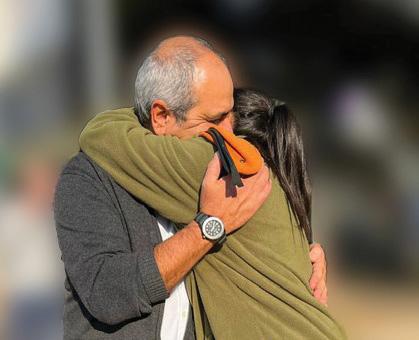

Hats are one of those things you really shouldn’t buy online because, like fingerprints, no two heads are exactly the same. You might be a size Small in a Stetson hat and a Size medium in a Borsalino hat, or an inbetween size in Kangol. In our store we can make any hat fit. Perfectly. You finally found the perfect Yom Tov hat but it’s a tad too small? We’ll make it larger, a perfect fit. Too big? We’ll make it smaller, a perfect fit. Yes, we have an online site, and if you can’t get to our store certainly buy on our Website. But if you want your hat to fit just right come to SherlockS Hats, the #1 hat store in Israel.
Dorot Rishonim 3 • Tel: 02 563-7155 • www.SherlockSHats.com



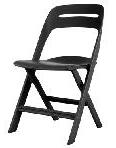

New building starting constuction in Baka 3 and 4 room apartments, starting at 4m shekel, small 4.5 story building, Sukka porch with every unit. Brand New Building in Mekor Chaim
Recently finished, 4 room 111m, mirpeset, storage, parking, Shabbat Elevator, 3rd floor. 4.37m shekel
Great opportunity to buy in a new building starting construction in Arnona close to Baka. Great prices and the price isn't linked to inflation! Starting at 2.55m shekel
Do you have a life insurance policy you:
• No longer want?
• No longer need?
• Can no longer afford the premium?
• Could you use extra money instead of keeping your policy?
I can guarantee that if you qualify with the underwriting process I can get you more money than if you cash it in with the company.
Please contact Moshe Russell at: Buymypolicy32@gmail.com




RAV DANIEL MANN
Question: When I ride my bicycle, I often come across illegally parked cars that make it challenging to get through. While I am careful, I might accidentally scratch a car. Would I be responsible to pay damages if I did?
Answer: If Reuven left his property in a place/manner it has no right to be, and Shimon’s animal went by and purposely kicked it, Shimon must pay damages, but Shimon is exempt from the animal’s inadvertent damage while walking by (Bava Kama 32a; Shulchan Aruch, Choshen Mishpat 389:20). You might compare your bicycle to Shimon’s



Rav Daniel Mann
animal. However, the exemption of inadvertent damage to improperly positioned objects applies to damage done by one’s animal, not done by a person (Tosafot, Bava Kama 27b; the person powering/steering the bicycle is considered a direct damager).
The mishna (Bava Kama 27a) says that if Reuven left his vessel in the public domain and Shimon tripped over it and broke it, he is exempt. The gemara (ibid. 27b) wonders why we cannot expect Shimon to be careful, and cites four answers. The most accepted one (Shulchan Aruch, CM 412:1) is that people are not expected to inspect their walking path. You might claim that, similarly, you cannot be expected to lead your bike through a tight place without possibly scratching an obstructing car. However, poskim (Nimukei Yosef to gemara ibid., Yam Shel Shlomo, Bava Kama 5:9) say that the leniency is limited to cases where the damager was unaware that the object was present, but when he knows there is something to avoid damaging, we expect him to succeed. The fact that the object is not supposed to be there and the damager’s lack of intent to damage do not seem to exempt.
A stronger ground for exemption, although not for too many cases, is based on Rav’s explanation to the gemara’s exemption – in the mishna’s case, Reuven’s vessels made the public path impassable. This is based on the concept that in certain cases, a person can take the law into his own hands to protect his interests (Shulchan Aruch, CM
Eretz Hemdah, the Institute for Advanced Jewish Studies, Jerusalem, is headed by Rav Yosef Carmel and Rav Moshe Ehrenreich, founded by Rav Shaul Yisraeli, zt”l, to prepare rabbanim and dayanim to serve the National Religious community in the Israel and abroad. Ask the Rabbi is a joint venture of the OU, Eretz Hemdah, and OU Israel’s Torah Tidbits. 4:1). So, if the situation warrants it, a person may purposely break the vessels in order to get by, and he certainly is exempt if when trying to squeeze by, he accidentally did damage (Bava Kama 28a; Shulchan Aruch, CM 412:2).
Regarding your question, each case can be different and can be unclear. How crucial is it to squeeze by (i.e., is there no reasonable detour?)? How likely is it that you will damage the car, and does it make a difference? What is the halacha if you could have gotten by without damage, but you did a poor job? The Aruch Hashulchan (CM 412:4) seems to take a measured, practical approach to this matter, understanding the passerby’s predicament, but gives few details. I saw an approach that gives great leeway to the passerby (Mishpetei Hatorah, Bava Kama 53), but it was low on sources and proofs.
There is a third reason not to have to pay in certain cases. The damage a slow-moving bicycle might make to a car is likely to be minor. Damage payment is either to fix the object or to pay for its depreciation. (There will not be a need to replace the car.) In Living the Halachic Process (I, J-6) we pointed out that only when the normal thing is to fix such damage can the owner demand it to be fixed. This might depend not only on the extent of the scratch but also how nice the car looks other than the new scratch. When repairs are not called for, one needs to determine depreciation, and depreciation is also affected by the above factors. For an
these are sent eastward with gifts. Avraham dies at age 175; he is buried by Yitzchak and Yishmael in Ma’arat Hamachpelah. Yitzchak is blessed by G-d: he lives in Beer L’chai Roi. The transition from Avraham to Yitzchak is complete. While G-d has been a silent partner in this parsha, here He completes the generational transfer – He blesses Yitzchak. The Jewish people will be Yitzchak and not Yishmael.

old, beat-up looking car, the amount due could thus be 0 NIS.
7th Aliya (25:12-18) The generations of Yishmael are enumerated. Yishmael dies. His descendants dwell from Egypt to Assyria. Yishmael’s story is brief. He has numerous and powerful offspring. The brevity echoes tions woman and began father’s that his icant the
It is indeed a good idea to be very careful, not only to be nice (even if you resent illegal parking), but to avoid the need to deal with a likely need to pay something. (Leaving a note for the car owner sometimes opens a “Pandora’s box” to unreasonable demands.) If you did scratch such a car but in a way that your conviction (which will often call for specific rabbinic advice) is that you owe nothing, you are not required to present yourself to the car owner (see Living the Halachic Process III, I-5).
BY RABBI R av, Beit Knesset
When Avraham addresses the people of Cheit, trying to “Ger V’Toshav Anochi Eimachem” (23:4) “A Stranger and This seems to be a contradiction. If one is a stranger than is no longer a stranger. What did Avraham mean?
The Magid of Dubno (Jacob ben Wolf Kranz 1741-1804) this tense situation in order to, both, state his truth and be said, on the one hand, “I am a Resident’ due to G-d’s promise need your agreement to purchase a plot. In other words, Avraham “strangers”, while they understood him as saying that “they” The peace was kept, and Avraham remained true to his Shabbat Shalom

For a Din Torah in English or Hebrew contact: Eretz Hemdah–Gazit Rabbinical Court 077-215-8-215 • Fax: (02) 537-9626 beitdin@eretzhemdah.org



Last time we continued discussing the case of baby Sofia who was born to a couple who were not her genetic parents. This was due to a tragic mistake in an Israeli fertility clinic, during which the wrong embryo was transferred to the couple.
The judge recently delivered an opinion that Sofia should be given to the genetic parents, even though she had been raised by her birth mother for the past two years. This decision has no mention of the discussion of the halachic definition of motherhood.
We saw, last time, that there are opinions that the genetic mother is the mother, but many disagree and hold that the birth mother is the halachic mother. There is no explicit source but a variety of sources have been presented to support this position.
One such source is the verse in Esther (2:7) “he adopted Hadassah, she is Esther, his cousin, since she had no father and mother, and the woman was beautiful and attractive, and when her father and mother died, Mordechai took her as a daughter”. The Talmud (Megillah 13a) asks why the verse repeats her being an orphan and her parents died? The Gemara explains that when her mother became pregnant her father died, and her mother died during childbirth.
Rashi clarifies this statement that the
significance of Esther’s mother dying during childbirth is that she could thus not be considered the mother. This explains how the Gemara elucidates the verse; Esther was not only orphaned but she had never had parents throughout her life.
This suggests that motherhood is halachically defined as the woman who gives birth to the child. If the mother was the genetic mother, then the Talmud’s explanation would be disqualified, since Esther’s mother would have been defined as the mother from fertilization, or the beginning of the pregnancy.
But this is not a halachic source, rather it is an allusion to a definition of motherhood. Therefore, most Poskim currently hold that this is a matter of doubt and will remain as such. In the case of a child born to a Jewish couple from a non-Jewish egg donor the child will need to be converted and when a Jewish couple have a child with their own egg but with a non-Jewish gestational carrier the child will also need to be converted, out of doubt.
While we have not “proved” who the mother is, we have shown that deciding that only the genetic mother is the mother is incorrect.
More on this next time.
Gemach for Chatan and Kalla: Meals for wedding and Sheva Brachot at cost
Eida Hachareidis Hechsher
Tel:052-633-1744
gadgadood@gmail.com

Walking down King George St. in Jerusalem and want a cold bottle of water?
Come help yourself to a bottle at 52 King George.
In loving memory of Yoni’s wife Tziporah a"h, a true Eishes Chayil, always full of chessed, kindness and laughter, and brought life and strength to so many people, that she touched! She was like Aron, who loved peace and pursued peace.

Yoni thanks Hashem for having the opportunity of having Tziporah in his life, to learn of her caring, patience and happiness, to overcome her challenges. May Tziporah's Neshama be a light onto the world, in a time of darkness, and may her Neshama shine to Gan Eden. Yoni misses Tziporah with tears in his eyes, as Hashem gave him a gift, a crown jewel, now he returns her to Hashem. With thanks and Toda. Love, Yoni
To help refill the supplysend tax deductible donations for Be’er Tziporah a"h Bottled Water Gemach to Chabad of RechaviaRabbi Yisroel Goldberg email Rabbi@JerusalemChabad.org 02 800-1717 www.JerusalermChabad.org/DonateShekels
1UniTravel - Medical Insurance at great prices Choose from multiple options 1unitravel.brokersnexus.com
1UniSim - Sims for USA and Worldwide Starting at $40 sales@1unisim.com
Call 077-400-3199 or USA 718-715-0001

Coming to London & Manchester in May! Call To Reserve Your Private Meeting
Jerusalem:
Talpiot New - 3 Bedrooms - 3.58M NIS
Arnona New - 4 Bedrooms - 4.7M NIS*
Mekor Chaim - Luxury Apts - From 3.53M NIS
Ramat Sheret - From 3.7M NIS
Haifa : New Project - Close To Beach / Sea
New - 2 Bedrooms - Starting From 2.2M NIS / $597K USD
New - 3 Bedrooms - Starting From 2.64M NIS / $716K USD
New - 4 Bedrooms - Starting From 3.0M NIS / $814K USD
Ra’anana: New Project - Heart of Town
3 Bedrooms - From 3.2M NIS
4 Bedrooms - From 4.68M NIS


EFRAT - LUXURY VILLAS - NEW DEVELOPMENT
177 sqm homes + 157sqm yard + 11 sqm porch - From 4.5M NIS
Upscale duplexes and triplexes - elevator included Smart home systems, underfloor heating, upscale kitchens
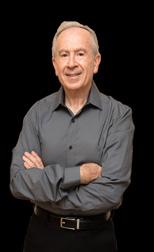
2 parking spots, huge gardens, some homes w/ private pools North Netanya
Luxury High Rise - First Line to Sea - From 7.3M NIS
Tel Aviv : NEW
Ben Yehuda St. - 3 Bedrooms From 5.9M NIS*
Yarkon Park - 2 Bedrooms From 4 99M NIS*
Jabotinsky St. - 3 Bedrooms - From 4.99M NIS*
Nahariya: NEW Hi-Rise PROJECT - LAST UNITS
3 Bedrooms - From 1.88M NIS*
Nahariya : Boutique Building - Quiet Street - Close To Sea 100 meters to Beach - Finishing in 1 year
4 Bedrooms - 2.95M NIS / $800k USD




“
YU Israel bridges the gap between Torah and academia— rigorous Torah study alongside a top-tier education, preparing me for my future without compromising my values.
Hannah Fine, Toronto
Achieve Excellence in Torah While Earning a YU Degree in Partnership with Top Israeli Universities



Immersive Torah Studies in a World-Class Beit Midrash Environment with Top Tier Rabbeim and Teachers.
Academic Degrees in Partnership with Leading Israeli Research Universities.
Vibrant Student Experience and Residence Life.

“
Learning in the YU Israel beis midrash allows one to strive for Torah excellence, right here in Eretz Yisrael, while being surrounded by dedicated Rebbeim and passionate talmidim.
Gavi Glickman, Kansas City
Achieve Excellence in Torah While Earning a YU Degree in Partnership with Top Israeli Universities


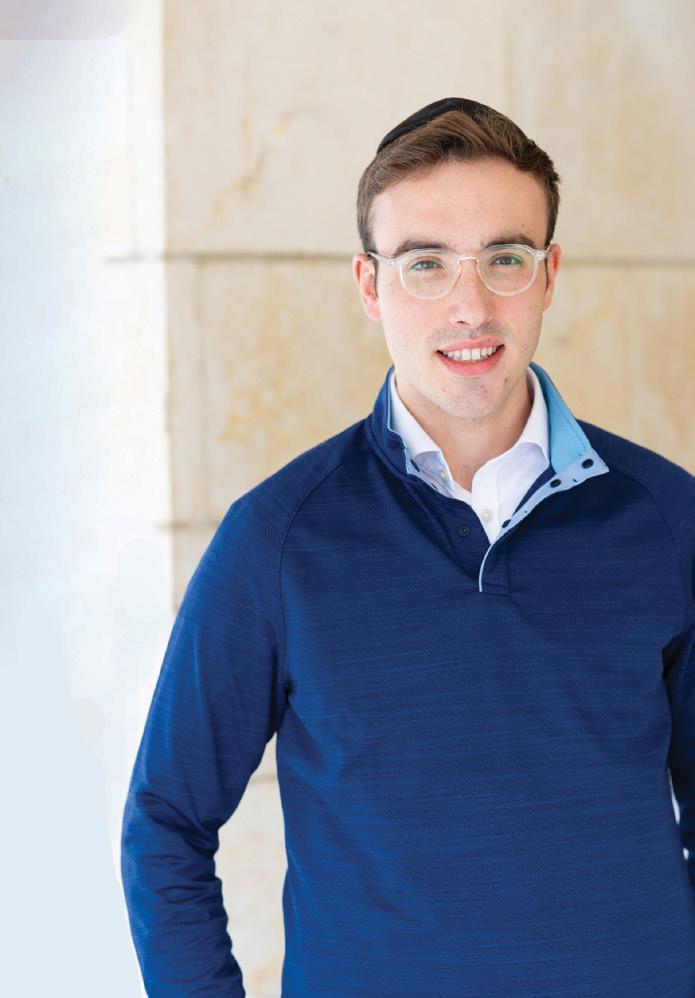
Immersive Torah Studies in a World-Class Beis Midrash Environment with Renowned Rebbeim, Open 24 Hours.
Academic Degrees in Partnership with Leading Israeli Research Universities.
Student Experience and Residence Life.
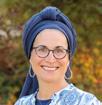
TORAH TIDBITS CONTRIBUTOR
Last year on Yom HaZikaron I was on an El Al flight to Poland. The captain announced that at 11:00am Israel time, when the siren would be ringing in Israel, the crew would stand for 2 minutes. Anyone who wanted to join was welcome.
I was moved to tears by how many people on the flight (at whatever angle they could) stood to be a part of that energy.
It is not a given.
After 2000 years of Exile, the beating heart of Am Yisrael continues to pulse with connection, reverence, strength, devotion, and yearning.
At this time of the year the air practically shimmers with it.

The next day, on Yom HaAtzmaut I was guiding in Auschwitz.
It was a strange reality.
As I walked around in my blue and white clothing, I was particularly tuned in to the dignity and devotion of Am Yisrael. Here we are, 80 years after the end of World War II, with so much darkness around us, still paying tribute to our kedoshim, still trying to bring light into the world, still building a People, and still trying to connect to Hashem.
It is not a given.
Later that day I read this pasuk in Shir HaShirim:
My beloved is like a gazelle or like a young stag. There he stands behind our wall, Gazing through the window, Peering through the cracks. (Shir HaShirim 2:9)
It is such a powerful image. Hashem, as our Beloved, watching over us, peering out from behind a wall or window.
Having just left Auschwitz it was challenging to try and make sense of this pasuk.
The Baal Shem Tov teaches that this pasuk is referring to the power of tefillah. When we open our mouths in tefillah, Hashem comes and resides there with us. Hashem connects with us through the letters themselves as it says, “He peers through the cracks.”
In my mind’s eye, I visualize Hashem peering out from inside the letters, from the curve of an Alef or the graceful arm of a Shin. It is a whimsical image, I know, but
I find comfort in it.
As I read the words of the tefillot, He is there, looking at me looking for Him.
Is that what generations of Jews have held onto?
Hashem’s presence was so hidden in Auschwitz. He was so hidden everywhere. And yet, there were still those who looked for Him. Those who felt His presence in a real way.
It is not a given that in the darkest places on Earth, Jews stubbornly seek light.
Last week, on Yom HaShoah, former hostage Agam Berger took the stage to play the violin at the March of the Living ceremony at Auschwitz.
Agam has said in many interviews that what kept her going was her “path of faith,” finding ways to look for Hashem and practice her Judaism.
How can someone who experienced such darkness shine such a bright light?
She could have given up. It would have been understandable.
But she didn’t.
We don’t.
We keep moving forward. We keep looking for Hashem, for hope.
Even in Auschwitz. Even in terror tunnels in Gaza.
And may that day soon arrive when the world will be filled with knowledge of Hashem like the water covers the sea. And may our yearning carry us there.
Shoshana teaches Chassidus for the Shirat David Community in Efrat as well as in Jerusalem for Midreshet Rachel v’Chaya and Shiviti Women’s Institute. She is a guide in Poland with JRoots and co-leads inspirational trips to Ukraine and around Eretz Yisroel. Shoshana has also been a guide at Yad Vashem since 2014.



Large 5 bed,




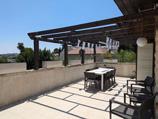

walsky
Yitzchak: 054-766-0338
Yitzchak@yykrealestate.com


“My friends are all busy with their own lives… They don’t really think about me.” It’s a sentence we hear far too often from singles in our community. And while it usually isn’t out of malice - life is busy and overwhelming - the result can be deep loneliness. We can and must do better. Here’s how:
1. AWARENESS:
It starts with awareness. Take a moment: who do you know who is single? When’s the last time you reached out? Not just to “check in” - but to invite them for Shabbat, to suggest a possible idea, or simply to say, “I’m thinking of you.” If someone crosses your mind, that’s already a hint from Above to act. Our awareness alone can be the first drop that eventually fills their cup of hope.
2. SMALL ACTIONS, BIG IMPACT
You don’t have to become a full-time

shadchan. One whatsapp message, one quick coffee, one thoughtful introduction - these tiny actions create a powerful ripple effect. Even if you don’t have an idea immediately, simply being present reminds singles they are not forgotten. We never know which small effort will be the one that changes someone’s life forever.
3. EMPOWER SINGLES TO SPEAK UP
If you are single and feeling invisible, it’s not a weakness to ask for support - it’s a strength. You can say: “I would love your help. If you think of anyone, please let me know.” This isn’t being pushy - it’s giving your friends a chance to step up for you. Sometimes people genuinely want to help but don’t know how. A little guidance can open many doors.
4. INVEST IN LEARNING AND ACTION
Building Jewish homes is not a side project - it’s part of the mission of Am Yisrael. To truly make a difference, we need to understand how matchmaking works, how connections are built, and how every one of us can play a role.
That’s why we invite you to join a special event: Tuesday, May 6th, 8 PM, JCT Machon Lev - JLIC and Shagririm Balev are hosting Rabbi Shalom Rosner and Rabanit Dr. Tamar Rosner for an evening on “The Future of Jewish Marriage.” If you want to be part of
building the future, this is the place to start. For more details, message the number below. With open hearts and open eyes, we can be the friends who make a real difference.
Want to set up your friends? Become their ambassadorjoin Shagririm Balev!




Founded in Israel in 2019 and led by Rav Rimon, Shagririm Balev - a social online matchmaking initiative - has taken the dating scene by storm. With over 10,000 candidates and 3,000 Ambassadors, in Israel and the US, Shagririm Balev is averaging a Wedding every 2 days! en.shagririm.org.il 0585323242








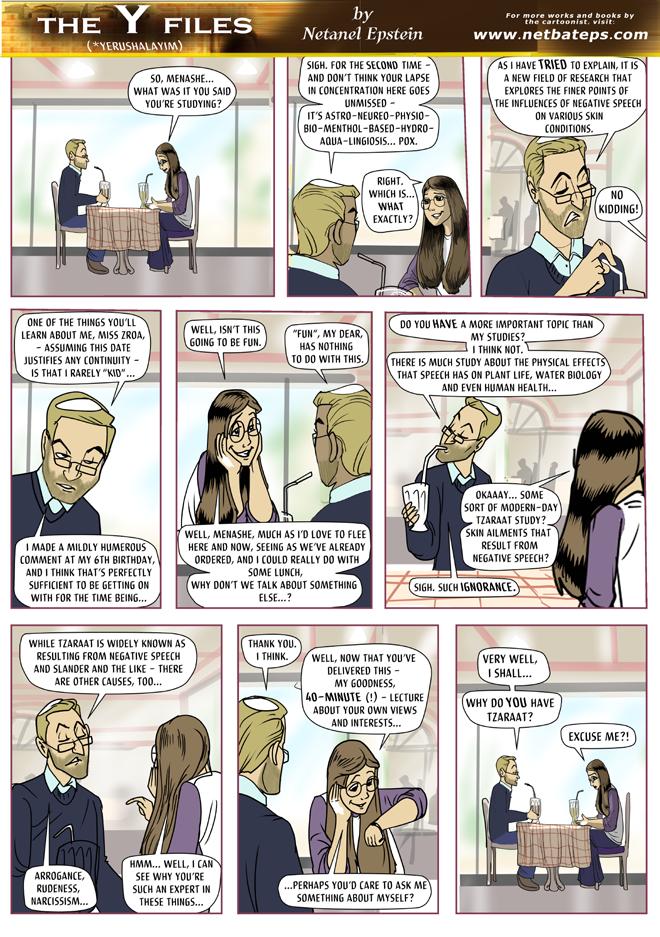



AVICHAI WACHSBERG CHAI BOYS SUMMER DIRECTOR
What’s up everyone! I’m super pumped and blessed to have the opportunity to share some Torah thoughts with you all.
Parshat Tazria opens with a reference to Brit Milah, at which the mohel declares: ”היהי לודג ןטקה הז“ — “This small one shall grow to be great.” But why state the obvious? Would anyone say that a fresh-off-the-grill 300g steak, fries, and an ice-cold Coke won’t taste good? Of course this newborn baby will eventually grow bigger!
In Parshat Bereishit, the sun is referred to as לודגה רואמה (the great luminary), and the moon as ןטקה רואמה (the small luminary). But if you look at them in the sky, they appear to be almost the same size — that’s how solar eclipses work! So what makes the sun great and the moon small?
The mefarshim explain: לודג means the sun is an independent source of light — that’s what makes it the לודגה רואמ. The moon, on the other hand, only reflects the sun’s light. It doesn’t shine on its own, and that’s why it’s called the .ןטקה רואמ
Growing up, kids and teens reflect much of what they’ve been shown and taught — by parents, friends, and teachers. That’s רואמ
ןטקה.
But as you grow into a young adult, the
shift begins. You start to become someone who needs to be the לודגה רואמ — to generate your own light. Your own individuality. Your own identity. And with that comes a massive level of self-accountability.
Before the State of Israel was established, we as a nation were constantly dependent on others — in a sense, we were just “reflections” of the cultures around us. Living in chutz la’aretz, we didn’t have the home-court advantage. We weren’t the ba’alei bayit — we weren’t in charge.
Baruch Hashem, today we have our own country — Eretz Yisrael — and on Yom Ha’atzmaut we celebrate our freedom, our achievements, and the לודגה רואמ that we, as a nation, have become! Enough of the centuries of being dependent on other nations for survival and success.
It all comes down to recognizing that the decision to succeed is in your hands. Hashem wants you to make those decisions — to choose the right environments, to push for what you believe in.
It’s your time to be the לודגה רואמ.
Make it happen. You got this. Don’t let life run you — take responsibility, and run your life.
Shabbat Shalom u’Mevorach, and Chag Atzmaut Sameach!
For more information and to apply for the Chai boys summer program, please vist chaiboys.ncsy.org and chaigirls.ncsy.org for our girls program.

(Vayikra 13:45)
The Gemara in Moed Katan (5a) offers a powerful drasha on this pasuk:
The Gemara teaches us that when someone is afflicted with tzara’at, it must be made known to the public. Why? So that everyone will pray for him.
This is a crucial insight into the way we approach tefillah. We often find ourselves focusing exclusively on our personal needs — “Hashem, help me ,” “Hashem, guide me,” “Hashem, heal me.” But this mindset is incomplete.
The Gemara is teaching us that davening is not meant to be a selfish act. A fundamental part of prayer is to think about and pray for others. When someone is in pain, when someone is suffering — whether physically, emotionally, or spiritually — we are meant to include them in our tefillos.
There’s even a moment in Shacharit that emphasizes this concept, though it’s often skipped or overlooked:
Diamonds, Gems, Precious Stones, Jade, Carvings, Fine Mineral Specimens, Etc.
*** Alan Sussman, “The Collector” *** 052-854-4504
Please call live, Text message or WhatsApp
someone else is in danger, it’s my responsibility to daven for them.
May we be zocheh that through thinking of others and sincerely praying on their behalf, Hashem will answer all of our tefillos — both for ourselves and for the entire nation.
“Behold, I accept upon myself the positive mitzvah of ‘Love your fellow as yourself.’”
This declaration reminds us that we are all part of one collective soul — Klal Yisrael. When one of us is in need, we all are. If


For Sale in Jerusalem
Ramot B: * 8 room cottage, 170m 4.900,000 NIS
For Sale in Efrat
Zayit: * 200m cottage, next to Shirat David. 6,500,000 NIS
Zayit: * 4 room apt. next to the mall. 2,650,000 NIS
Zayit: * 3.5 room apt. Stunning view. 2.250.000 NIS
Dekel: * Semi attached home.
180m, 6 rooms + option 4.190.000 NIS
Dagan: * 200m, 8 room cottage. Great location! 5,690,000 NIS
Gabi- 0524588716
www.yeshezra.org
Director: Menachem Persoff

Urgent appeal! Please help a handicapped mother with two special-needs children in danger of eviction for lack of funds. Thank you.
Website: www.yeshezra.org
Bank Transfer: Mercantile (17), Branch 642, A/C 79747843
Send Asmachta for receipt
Checks: “Yesh Ezra,” POB 31476, Romema, Jerusalem
Credit Card: Sara – 077-820-0196 / 058-530-9161
Sun-Wed (10:00am-14.30 pm)
Donate with:

Tax benefit for donations as per section 46a of the Israeli tax code
Inquiries: Menachem Persoff
050-570-1067 | menpmp@gmail.com


Supervised work in a supportive environment while earning a stipend for teens 14-17. For more information contact Deborah at 054-675-2026
deborah@crossroadsjerusalem.org or Avishai at 053-445-3786 Avishai@crossroadsjerusalem.org
July 1st to July 31st 2025
UNDERGRADUATE PROGRAMS
• Business Administration
• Business & Economics (double major)
• Communications
• Computer Science (BSc)
• Economics & Entrepreneurship with Data Science (double major)
• Entrepreneurship & Business (double major)
• Entrepreneurship, BA & Computer Science, BSc (double major)
• Government
• Psychology
ONE SEMESTER / ONE YEAR /
GRADUATE PROGRAMS
• Counter-Terrorism & Intelligence Studies
• Diplomacy & Conflict Studies
• Financial Economics
• Human-Computer Interaction (HCI)
• Behavioral Economics
• Innovation & Entrepreneurship
• AI & Big Data
• One-Year MBA
• Healthcare Innovation
• Machine Learning & Data Science
